Day three in North Korea began with a trip to the DMZ.
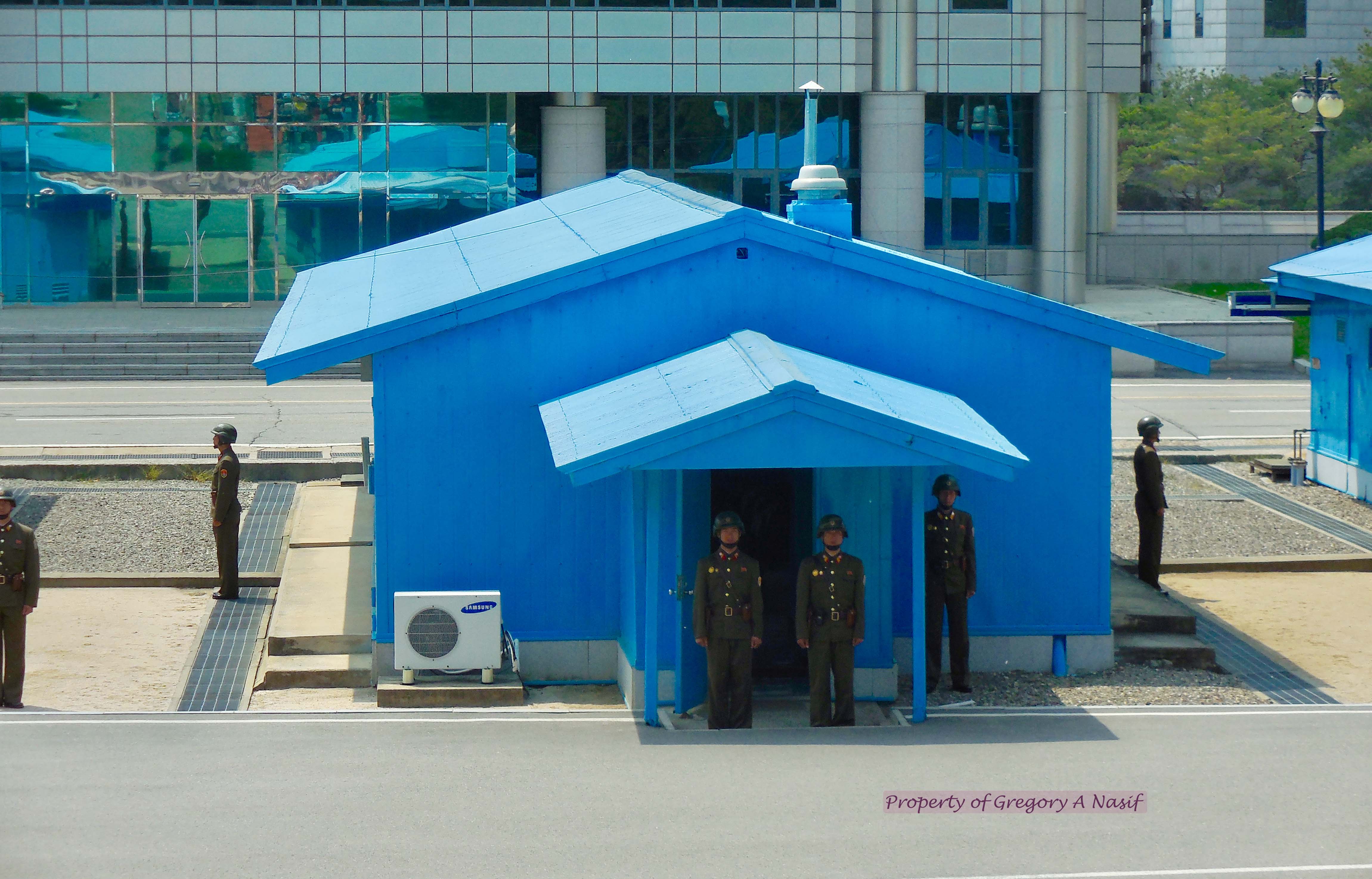
It continued thereafter with several major visits.
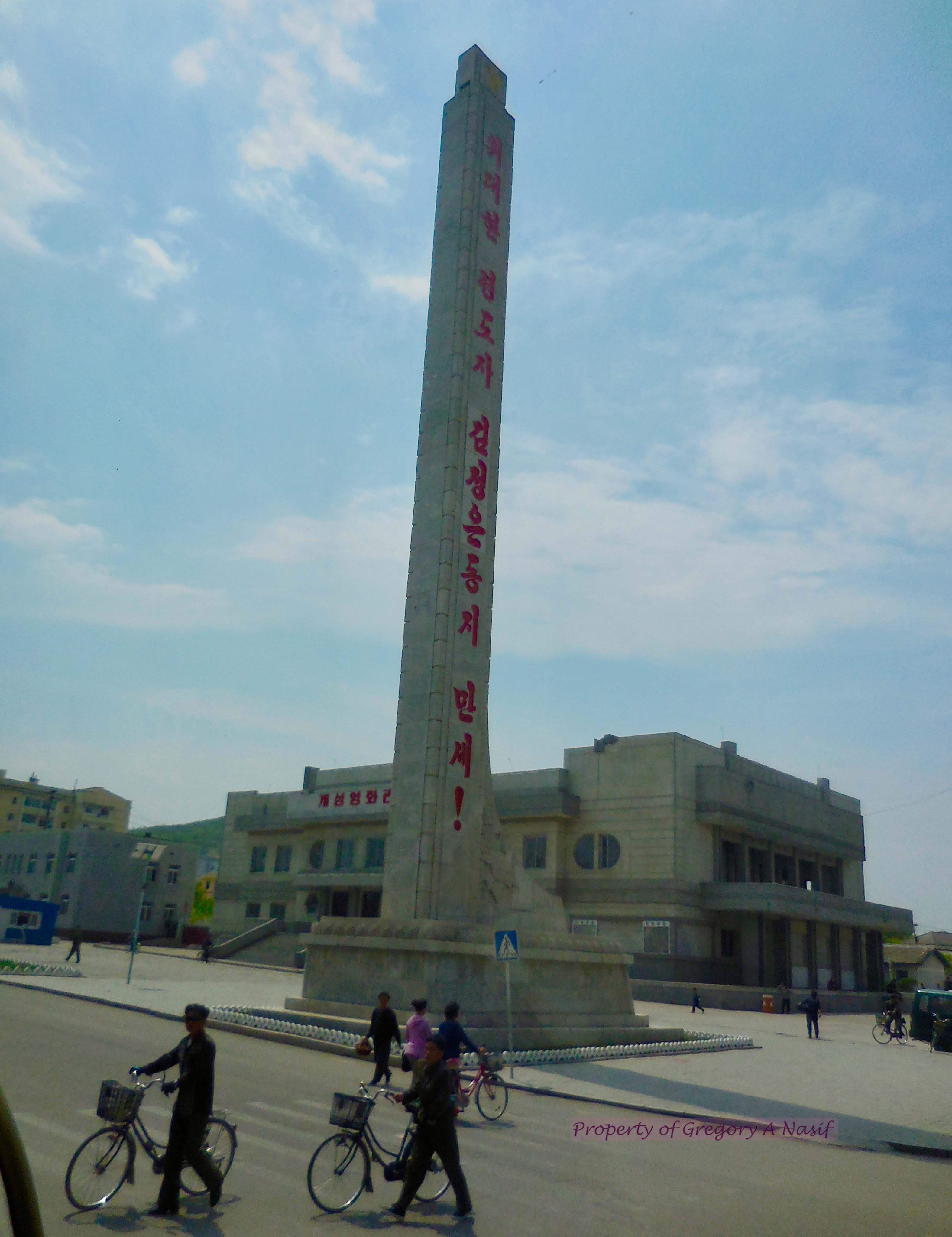
After a short drive through Kaesong and the countryside, the next stop was a North Korean wing of what is officially a UNESCO World Heritage site, the Royal Tombs of the Joseon Dynasty. Kaesong’s was once the seat of power for the Joryeo Dynasty, the first united nation in Korean history.
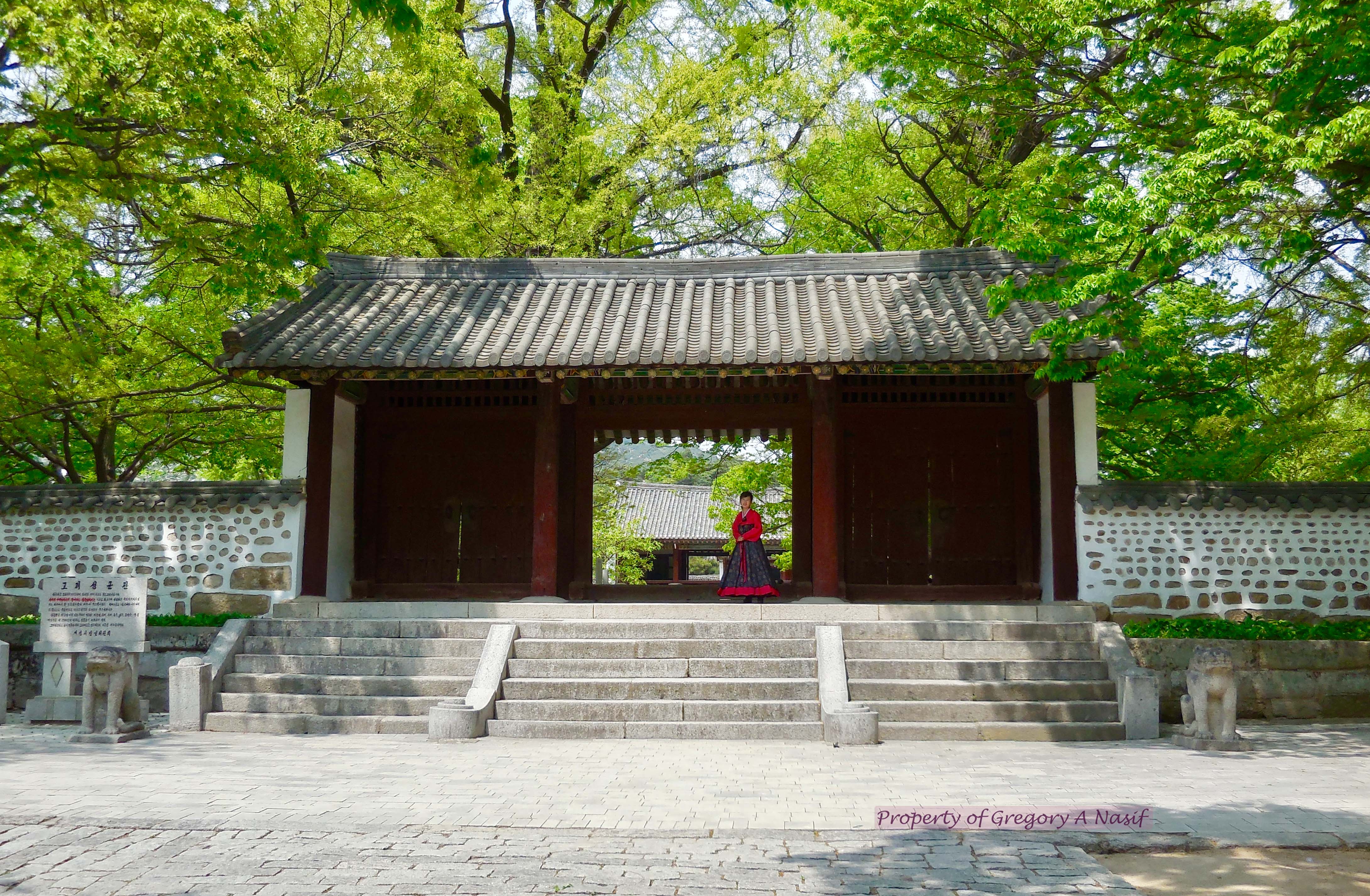 A wedding was taking place. The wedding attendants laughed and heralded the foreigners, insisting we join the married couple for a photo. The married couple didn’t seem so pleased. In this moment, we learned chughahanda, Korean for congratulations.
A wedding was taking place. The wedding attendants laughed and heralded the foreigners, insisting we join the married couple for a photo. The married couple didn’t seem so pleased. In this moment, we learned chughahanda, Korean for congratulations.

This historic site felt weirdly normal. Paintings and architecture bore nearly exact resemblance to castles in South Korea.

The guides insisted this was a UNESCO World Heritage Site. There are sixteen of these tombs throughout South Korea that are of the Joseon Dynasty, but the designation apparently stops at the border with North Korea, likely for political reasons. At the moment, however, we didn’t know that. So for a few hours, it felt like we’d left the propaganda bubble, into something fully authentic. Perhaps we had.

Next we entered Kaesong for a visit to a stamp shop and lunch.
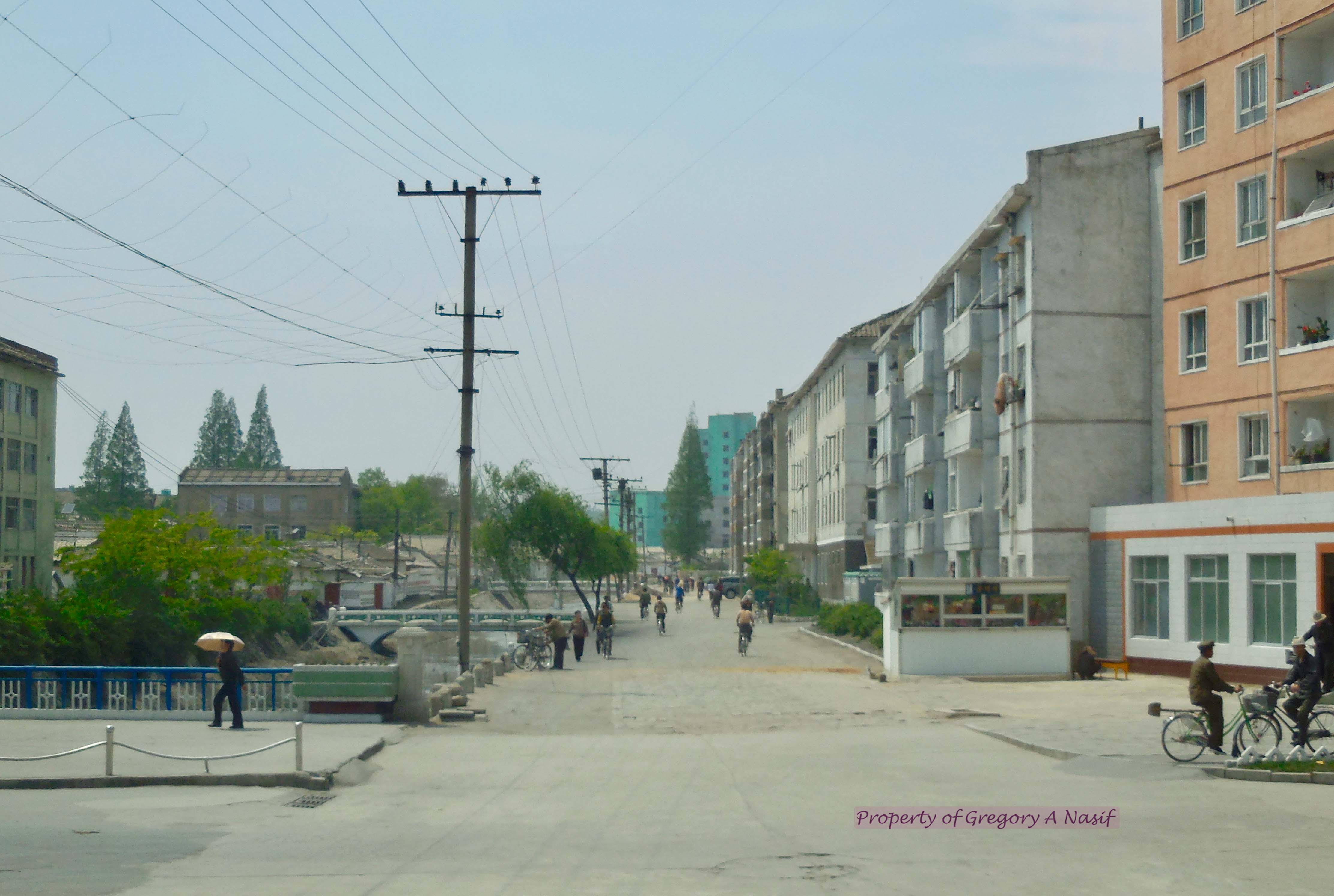
Kaesong
Kaesong contrasts mightily with Pyongyang, the former tall and imposing with some impressive dark, neon architecture, the latter, old, pale, and crumbling.

Kaesong
Kaesong’s buildings are mostly crackly white plaster, and look unlikely to survive the smallest of earthquakes. The few breaks from the white are usually red propaganda signs and majestic murals.
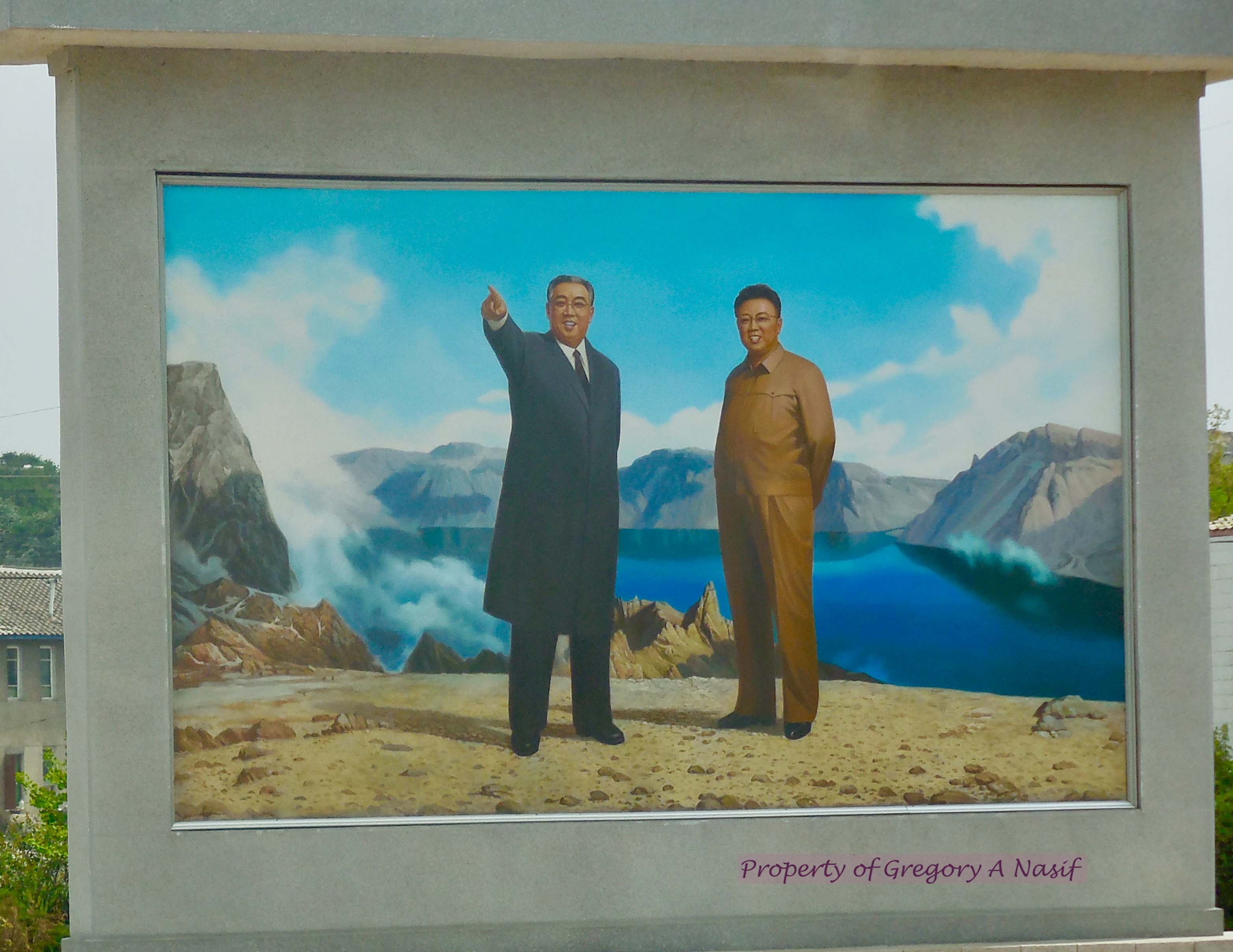 In a brief story about Kaesong, our tour guide suggested it was the historic capital of Korea following the nation’s unification in 1392. Either he was wrong or he lied. The capital was moved from Kaesong to Seoul under the Joseon dynasty in 1392.
In a brief story about Kaesong, our tour guide suggested it was the historic capital of Korea following the nation’s unification in 1392. Either he was wrong or he lied. The capital was moved from Kaesong to Seoul under the Joseon dynasty in 1392.
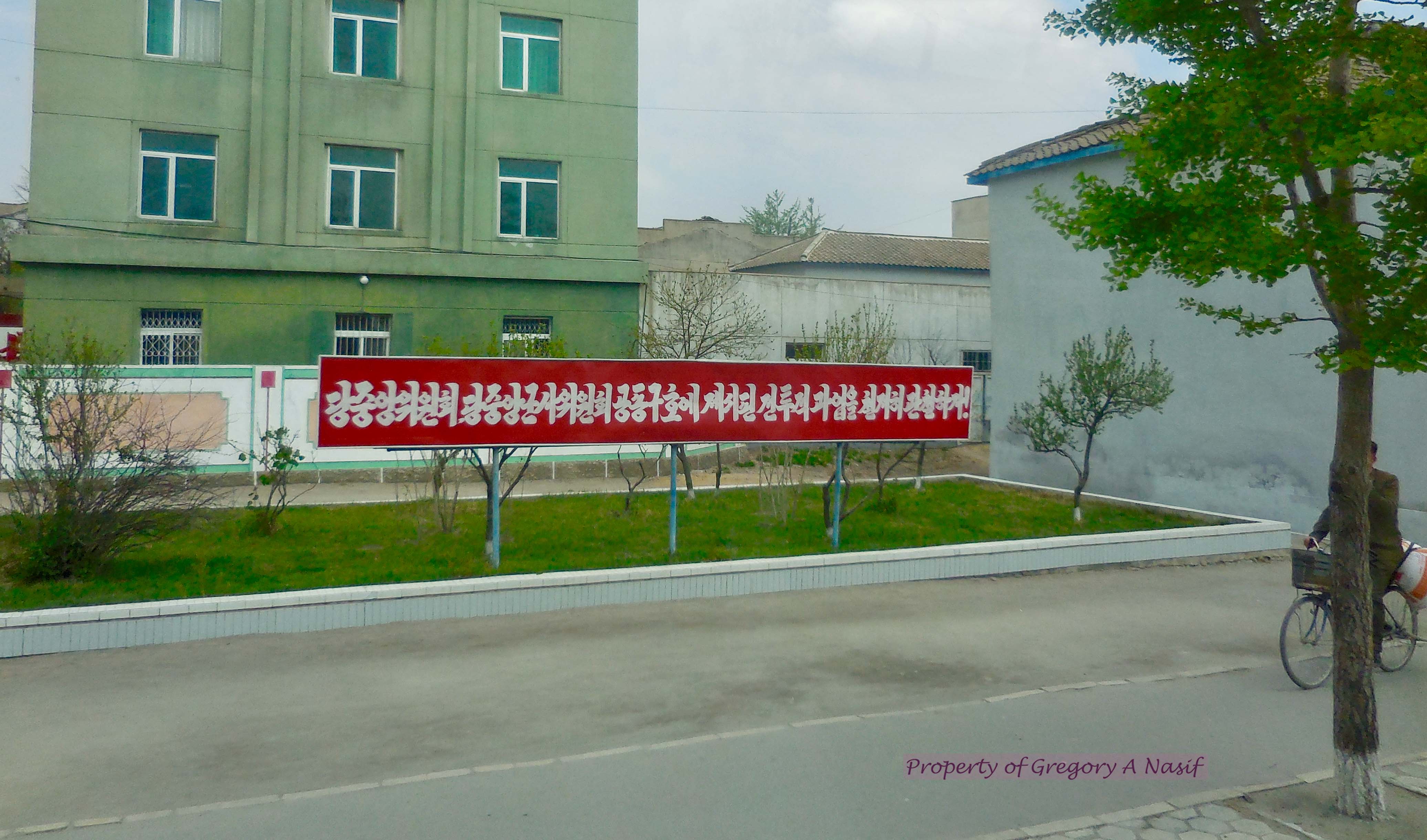
“Let’s support the military agenda of the Workers’ Party!”
North Korea’s poverty becomes more apparent outside its overfunded capital. According to the guides, Kaesong, captured by the North in the Korean War, has highest rate of support for reunification, as many Kaesong families were split in the war.
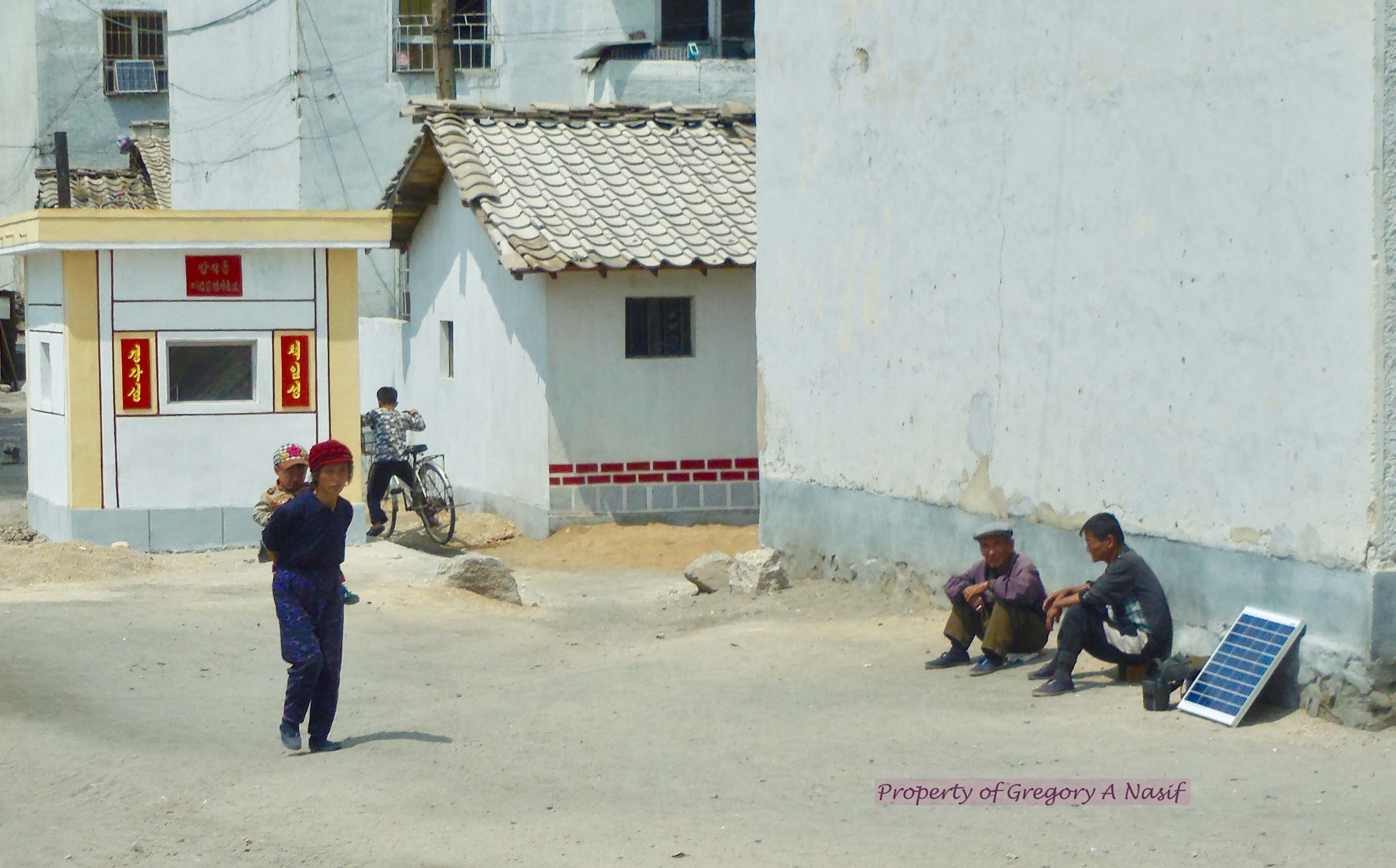
The restaurant was empty as usual.
The “traditional Korean lunch” was abundant, to say the least. There were many small plates, as well as potted chickens. The chickens looked a bit small – or perhaps, American chickens are deliberately fattened.

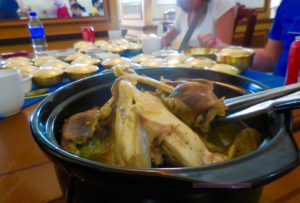
After lunch our bus hit the road again back to Pyongyang, passing through the rest of Kaesong.

Kaesong
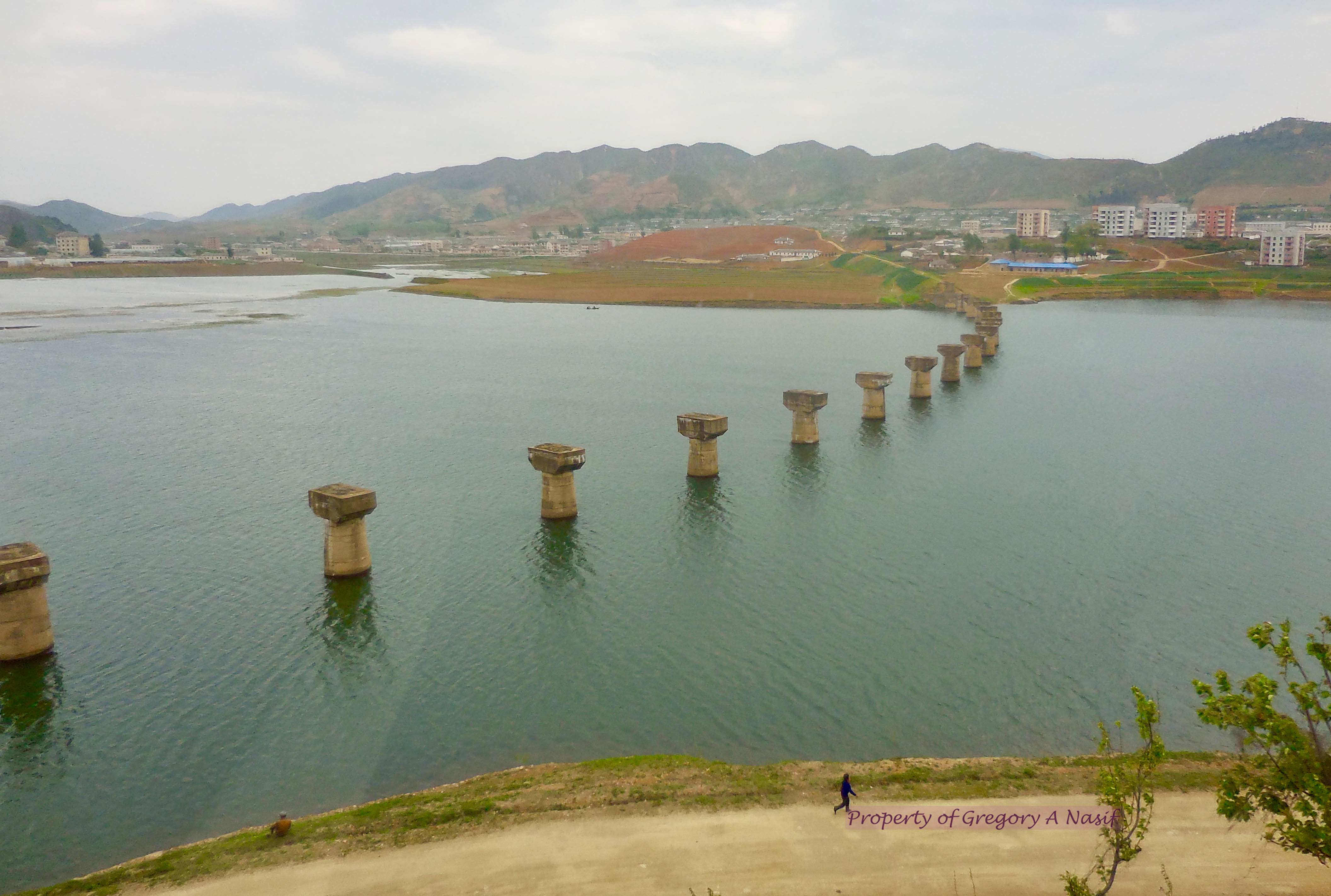
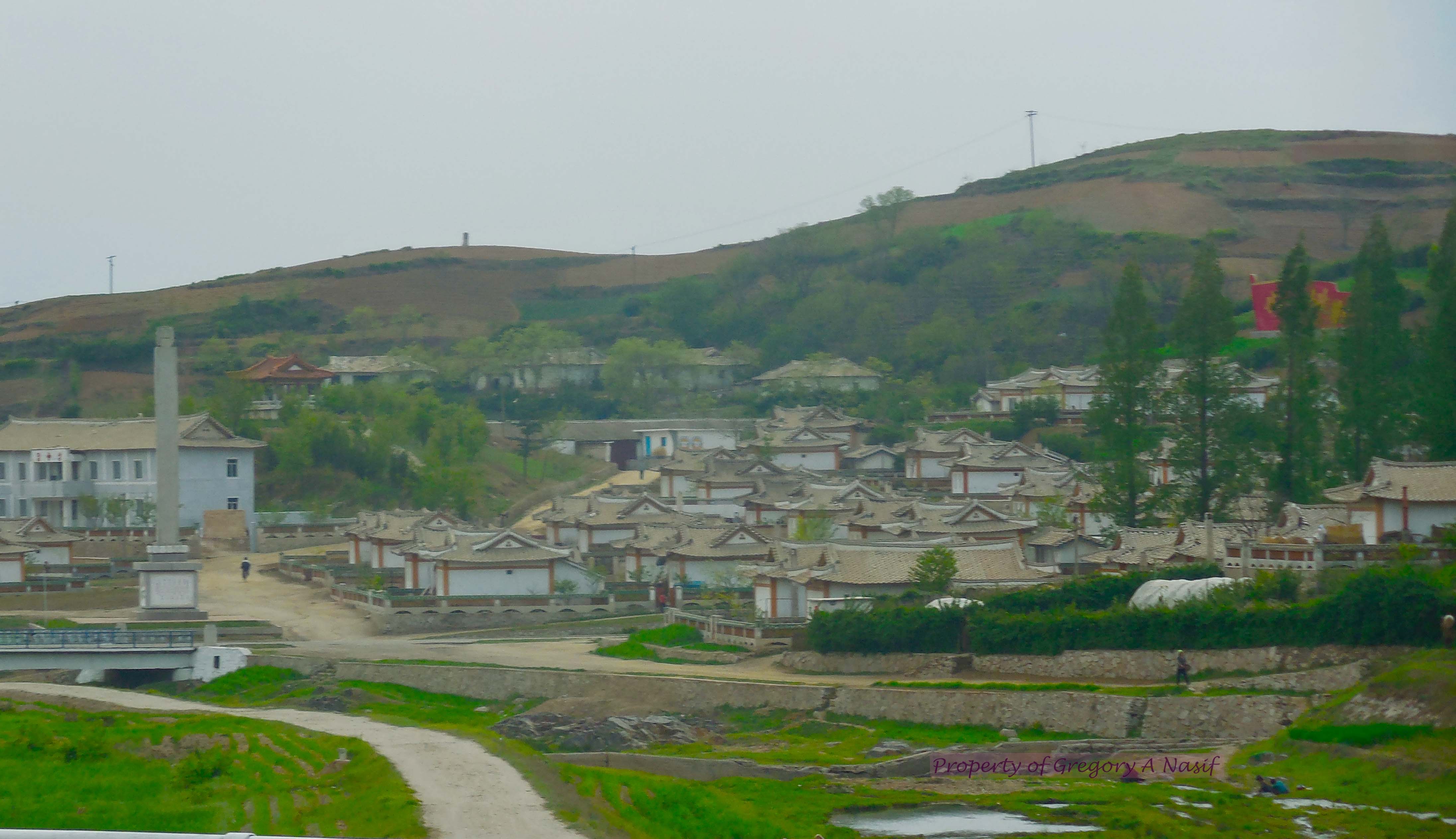

Farmland near Pyongyang
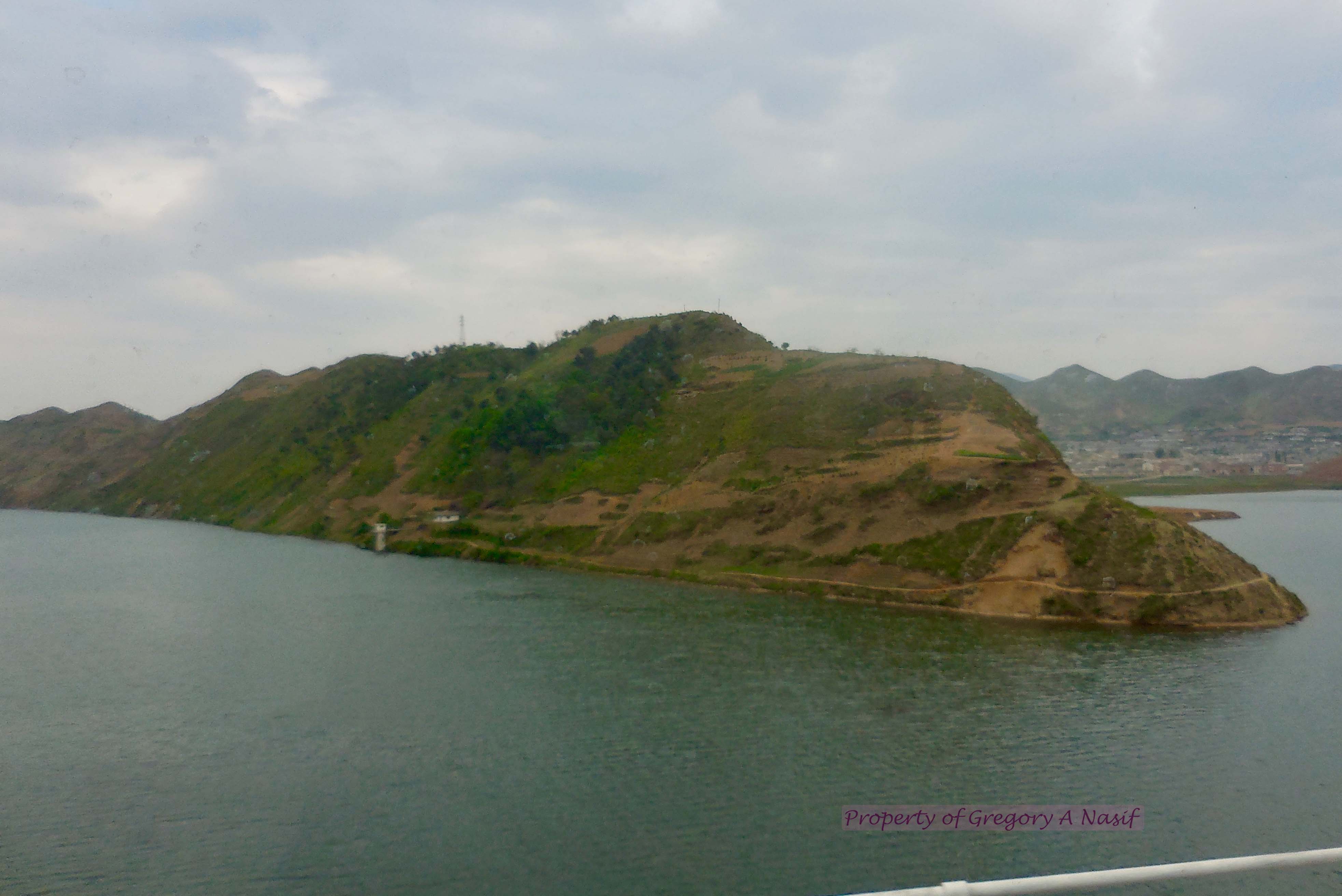
Our itinerary transitioned from matters of brute force in the south to the arts in Pyongyang.
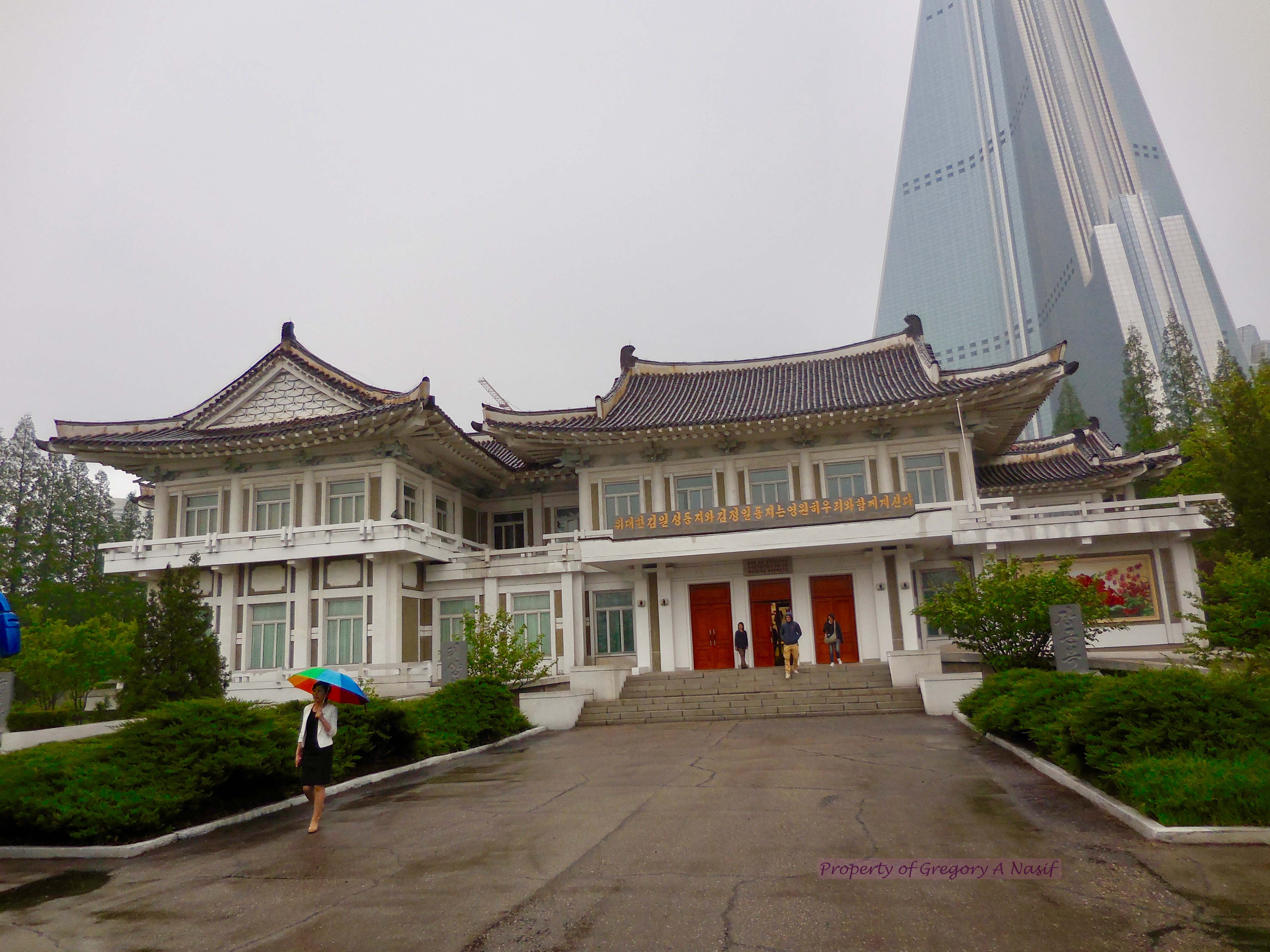
Our first stop back in the capital was an embroidery shop.
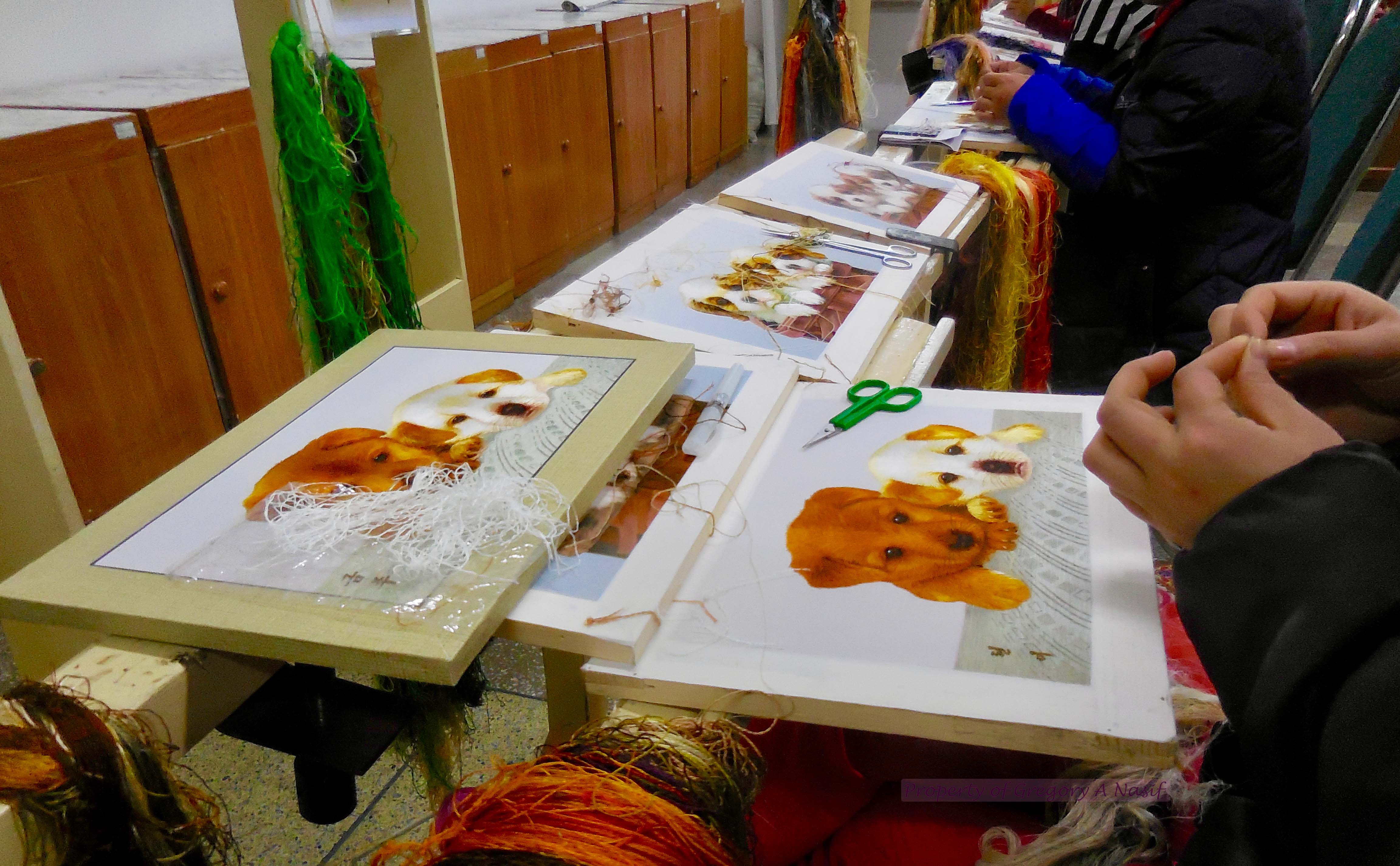
Embroiders were working very hard on stunning, extraordinary pieces.
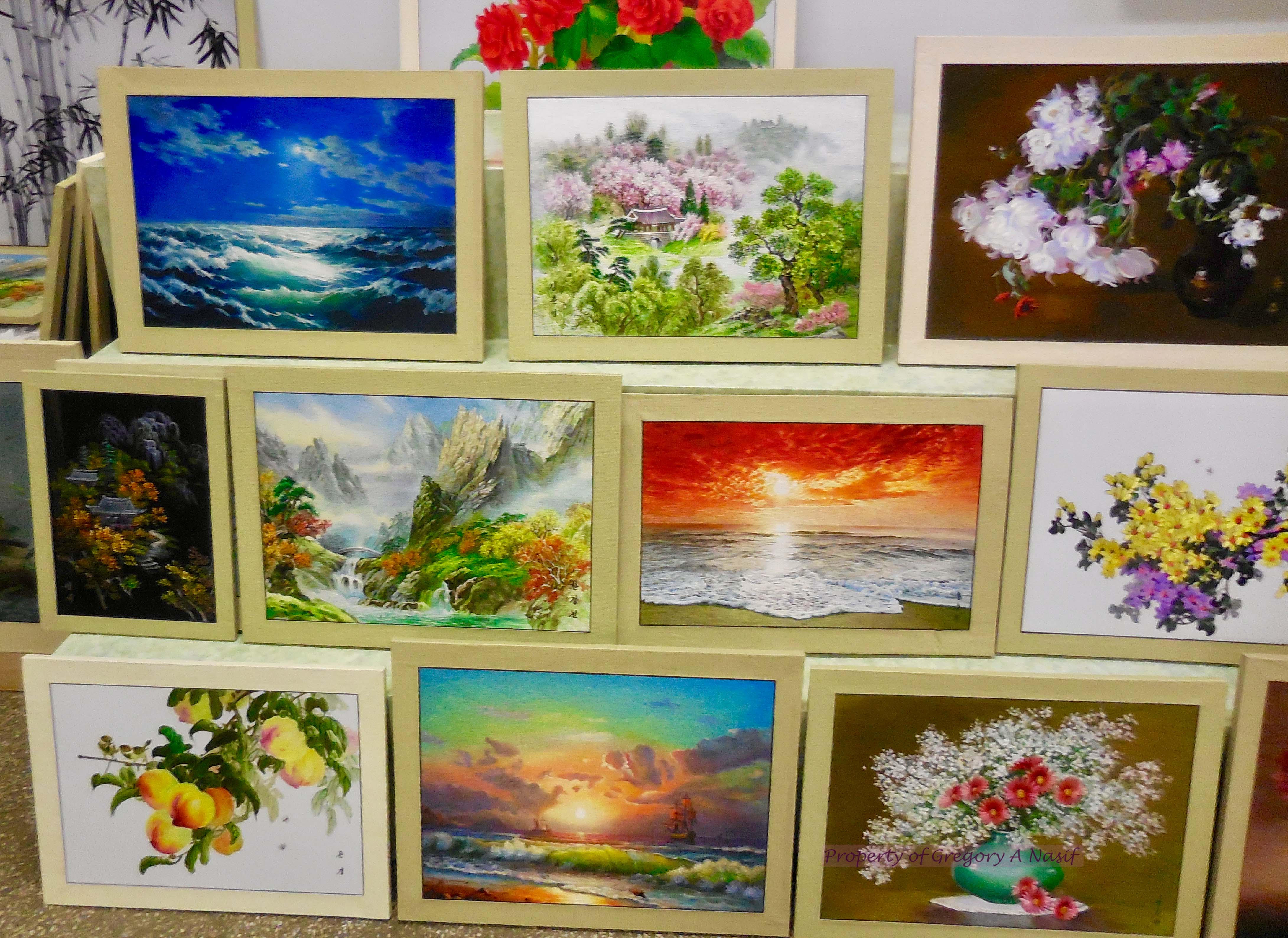
They did not look up once, even as foreigners filled the room and took pictures of them and their work.
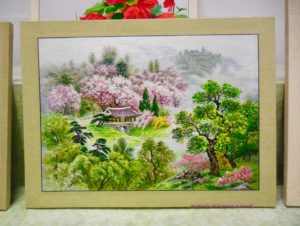
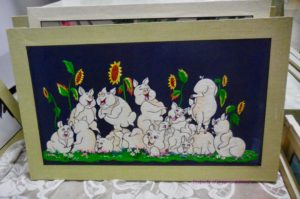
Next we traveled to a greenhouse. Apparently two flowers, kimjongilia and kimilsungia, were specially bred for Kim Jong-il and Kim Il-sung, and this place was full of them.
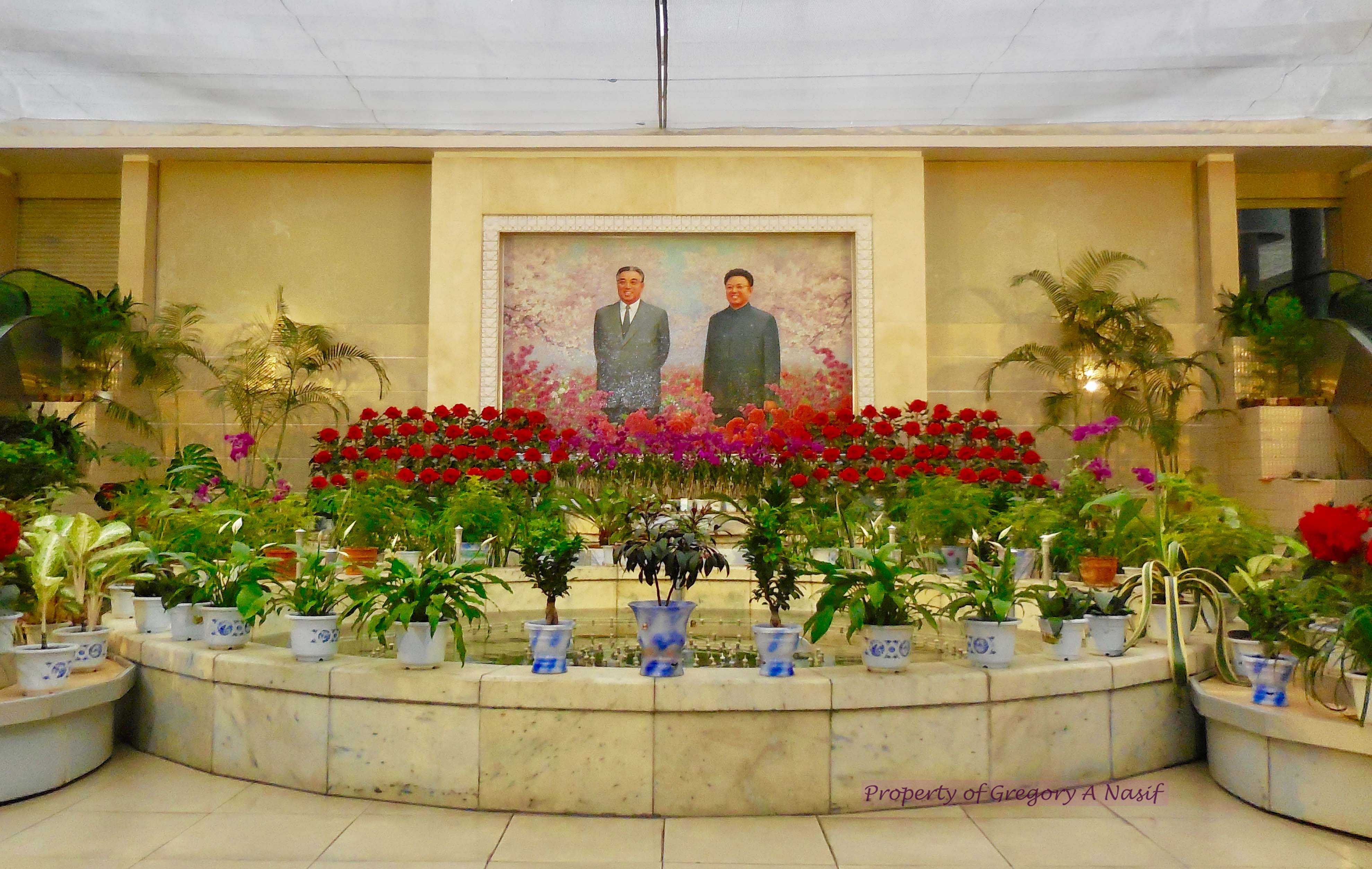
The portraits were a bit much.
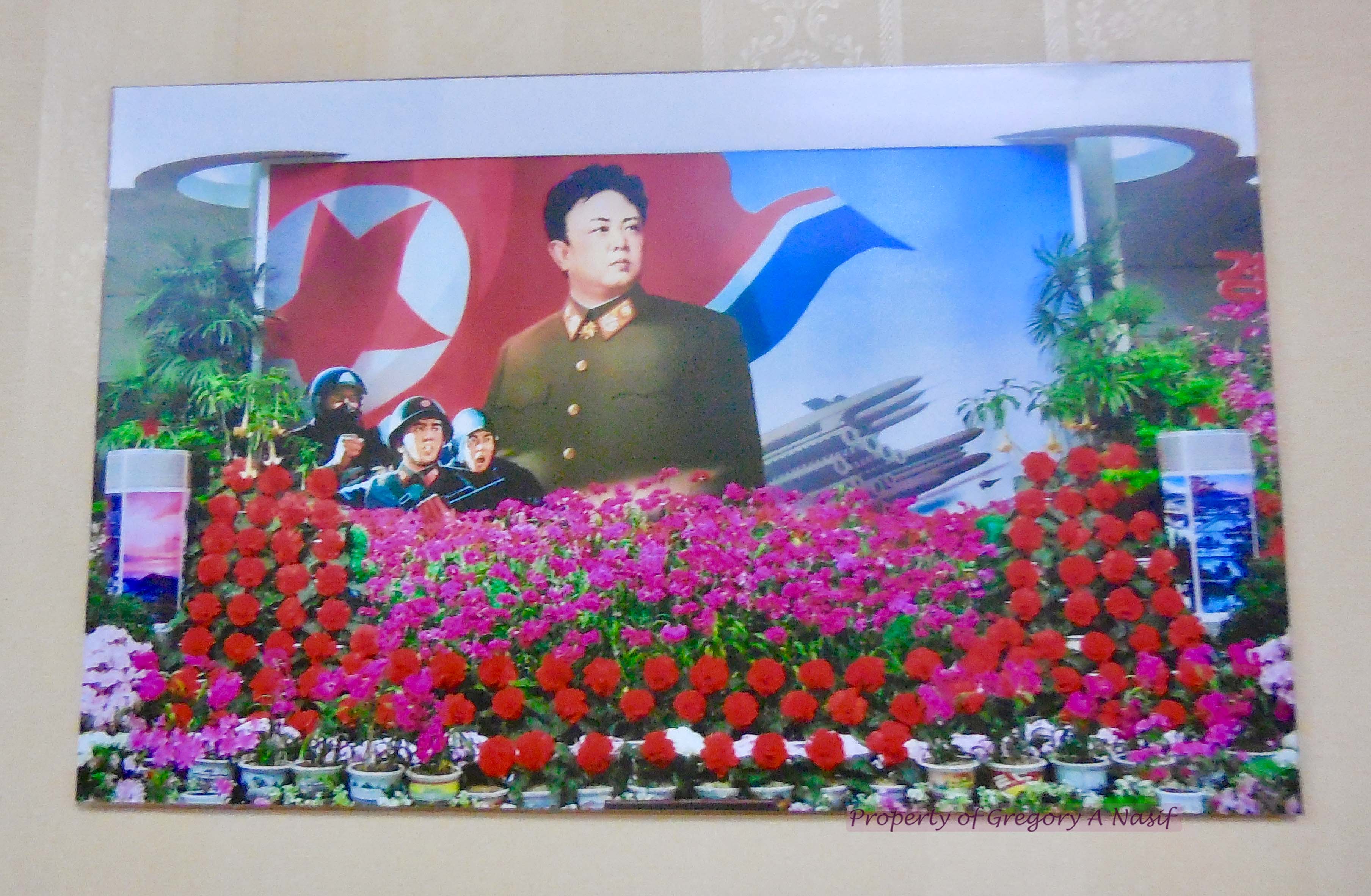
From the greenhouse we took a bus to the famous Kim Il-sung Square.
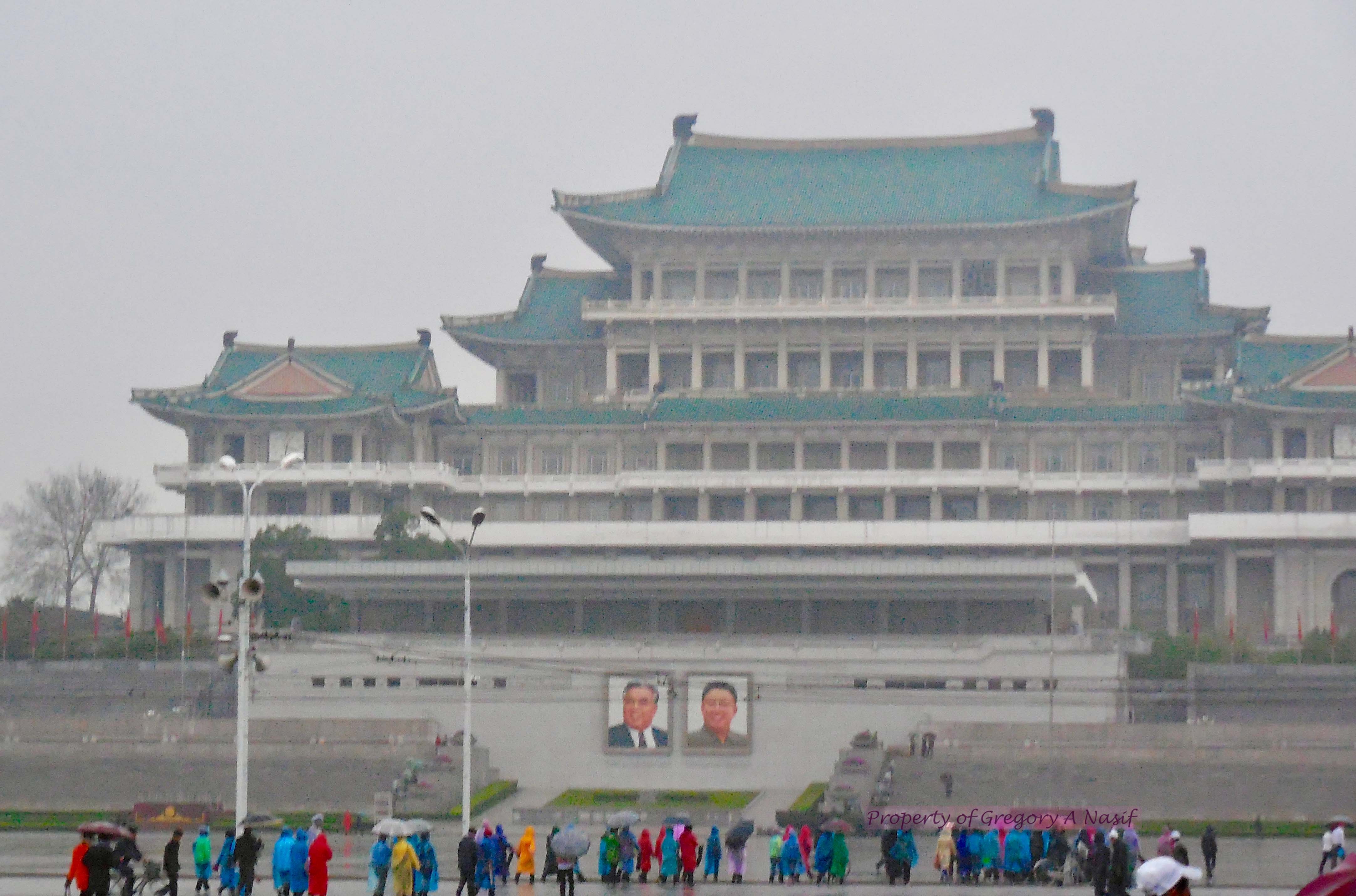
Grand People’s Study House, Kim Il-sung Square
This is one of the most central places in Pyongyang. Most photos of state parades and demonstrations are taken here.
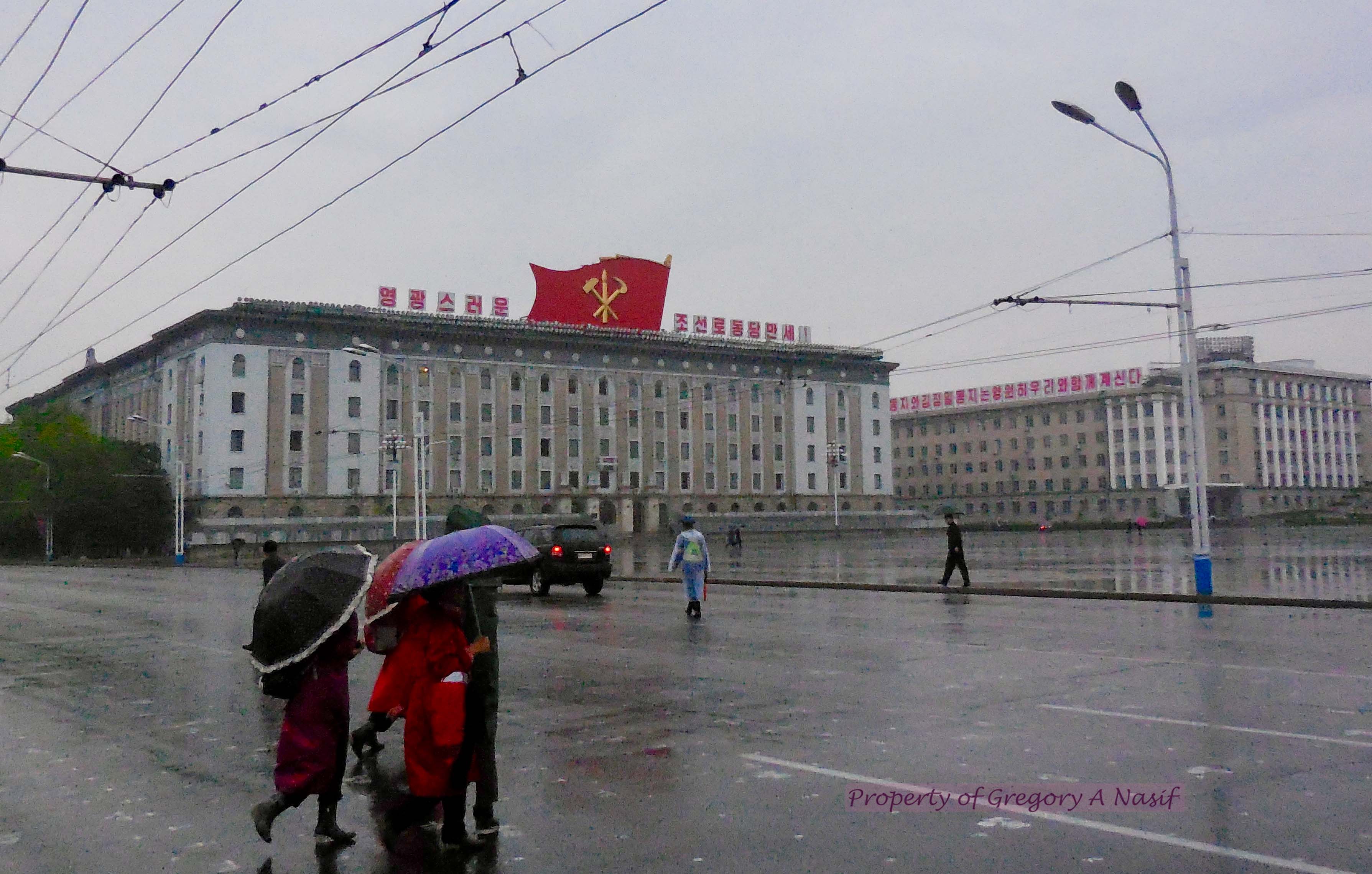
Ministry of Foreign Trade, Kim Il-sung Square
Leninists love their central squares. The feeling in North Korea, however, differed greatly from Tiananmen Square in Beijing, which this writer visited two years earlier.
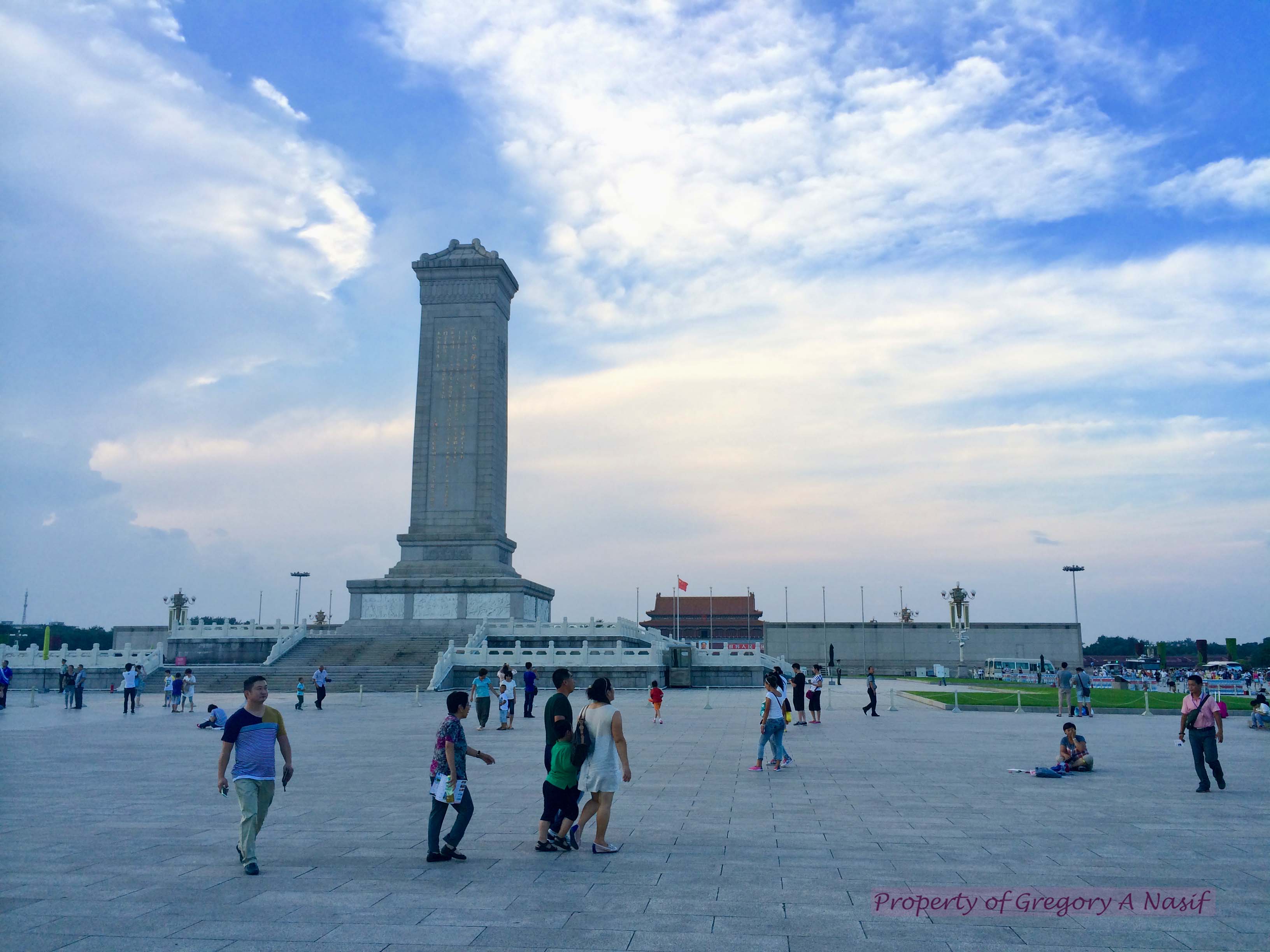
Tiananmen Square, August 2014
Everyone in the free world knows the image of the Tank Man and his brave stand at Tiananmen Square, after more than 4,000 were massacred by the Chinese Communist Party.
But there was never any such demonstration in North Korea, where the public in 1989 were almost certainly completely ignorant of the outside world and still very much infatuated with their leadership.
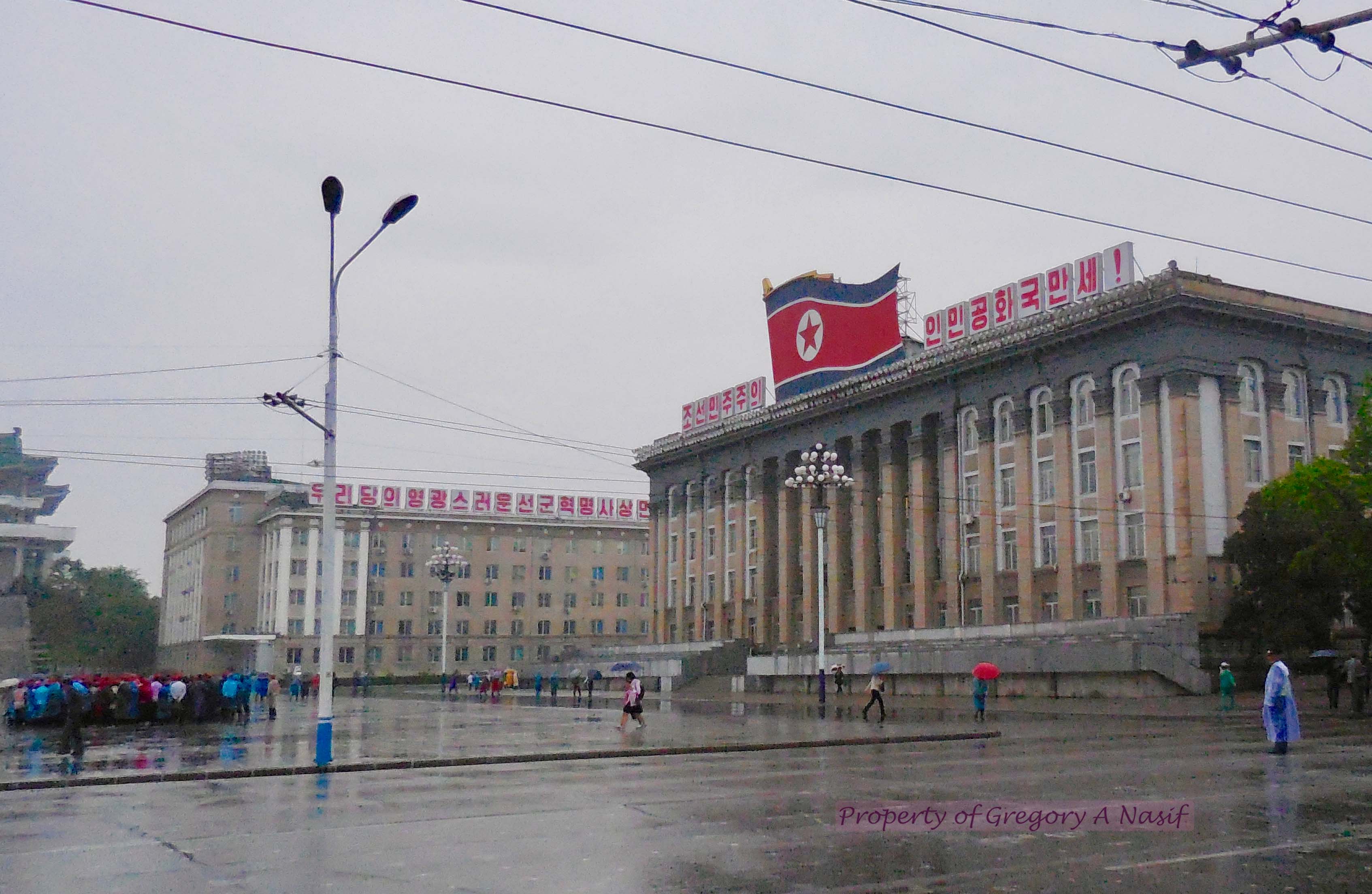
Kim Il-sung Square. Right: Workers’ Party of Korea Headquarters. Left: Ministry of Foreign Affairs.
While discontent may be churning beneath the surface, we have yet to see the bubbles, let alone hear the roar of people yearning to be free, as we heard in Tiananmen in 1989.
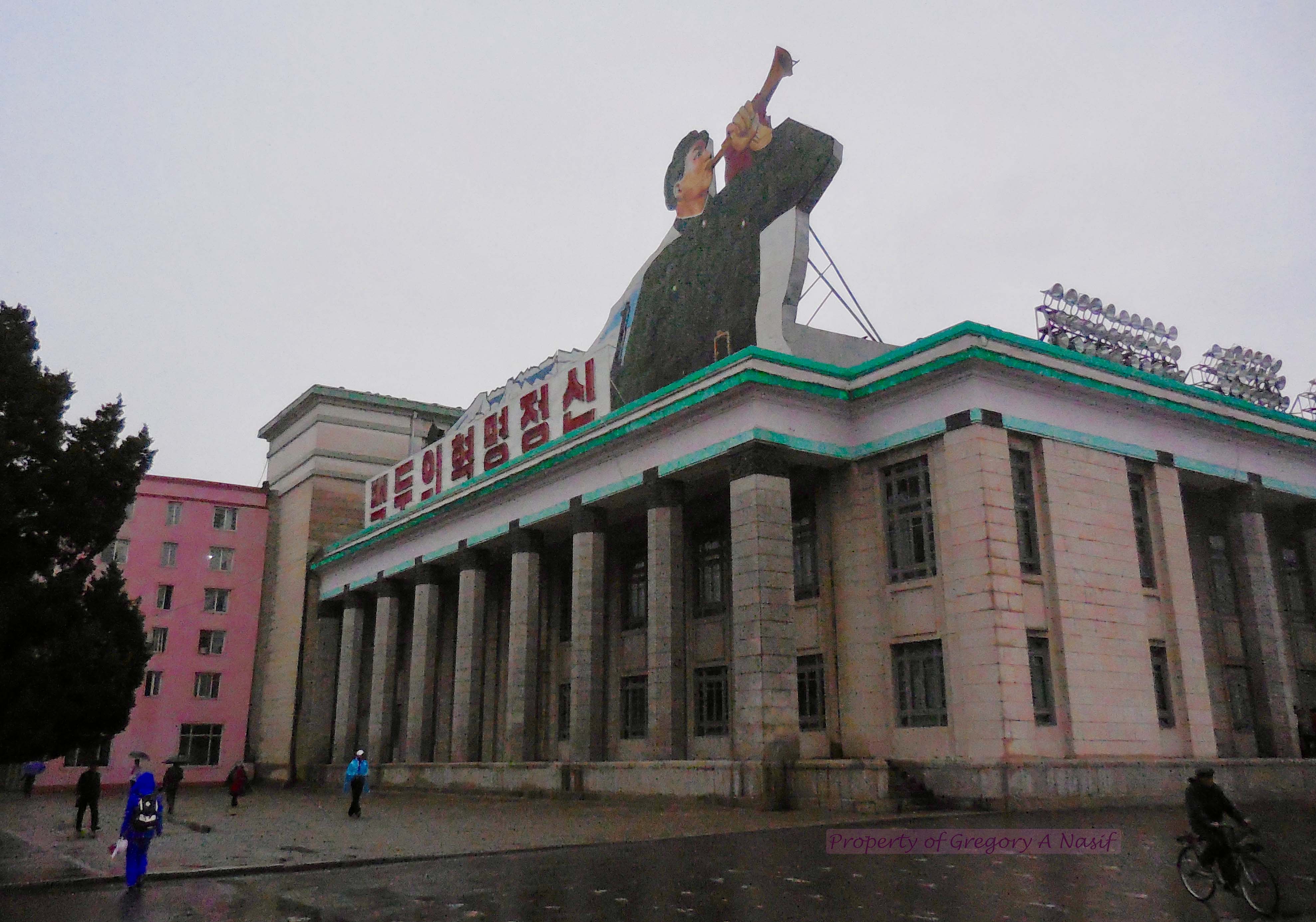
Korean Central History Museum, Kim Il-sung Square
In Tiananmen Square , there was an ominous atmosphere where evil had triumphed. But in Kim Il-sung Square, there was an oppressive silence, where evil never had to play a match.
Groups of young students were gathered around the square. Inevitably, they’d stare at the foreigners. Occasionally there were waves and giggles.
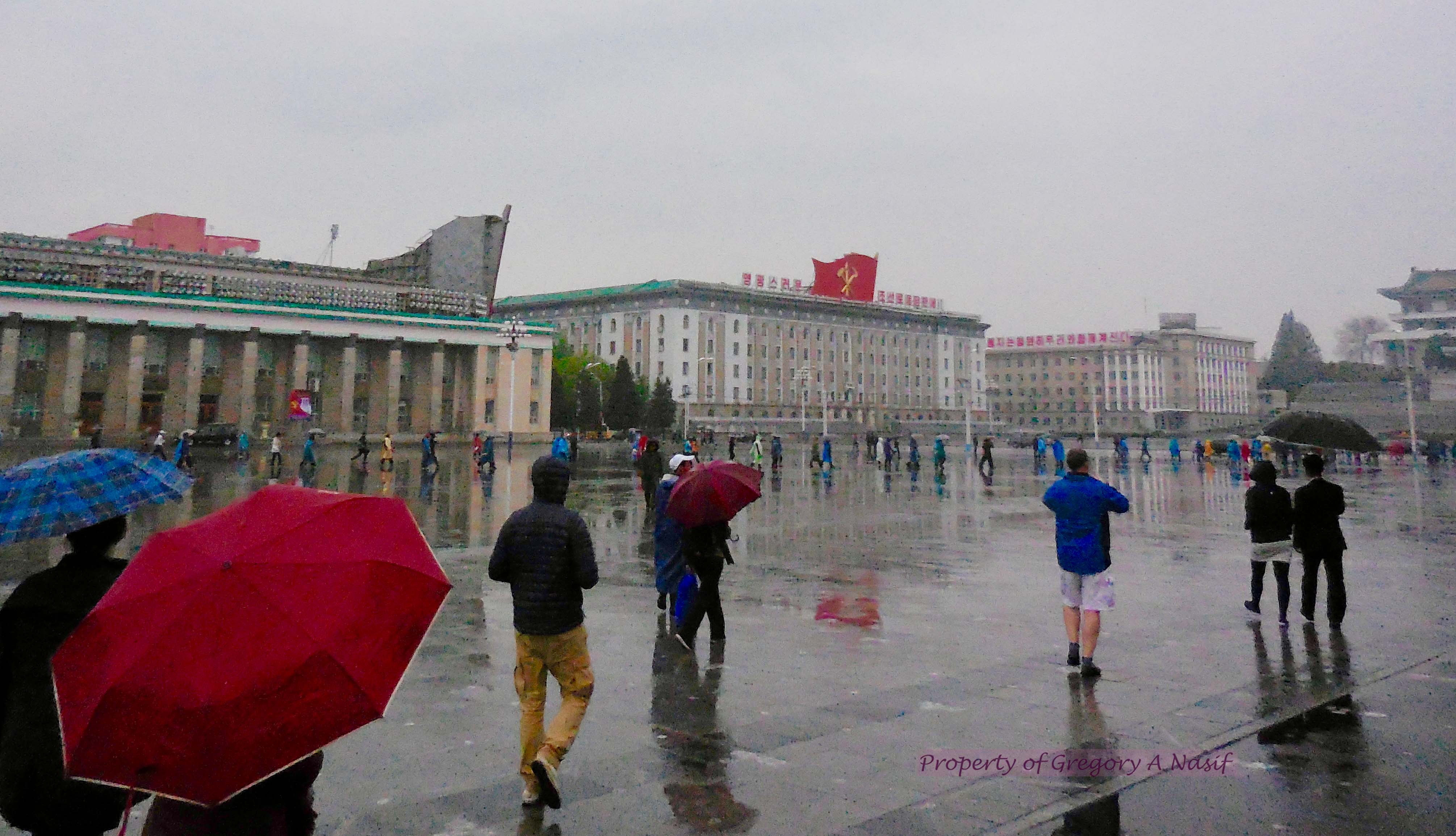
We took a last stop at the book store. Famous titles included Kim Jong-il: The Great Man and Supreme Leader Kim Jong-un in the Year 2012.
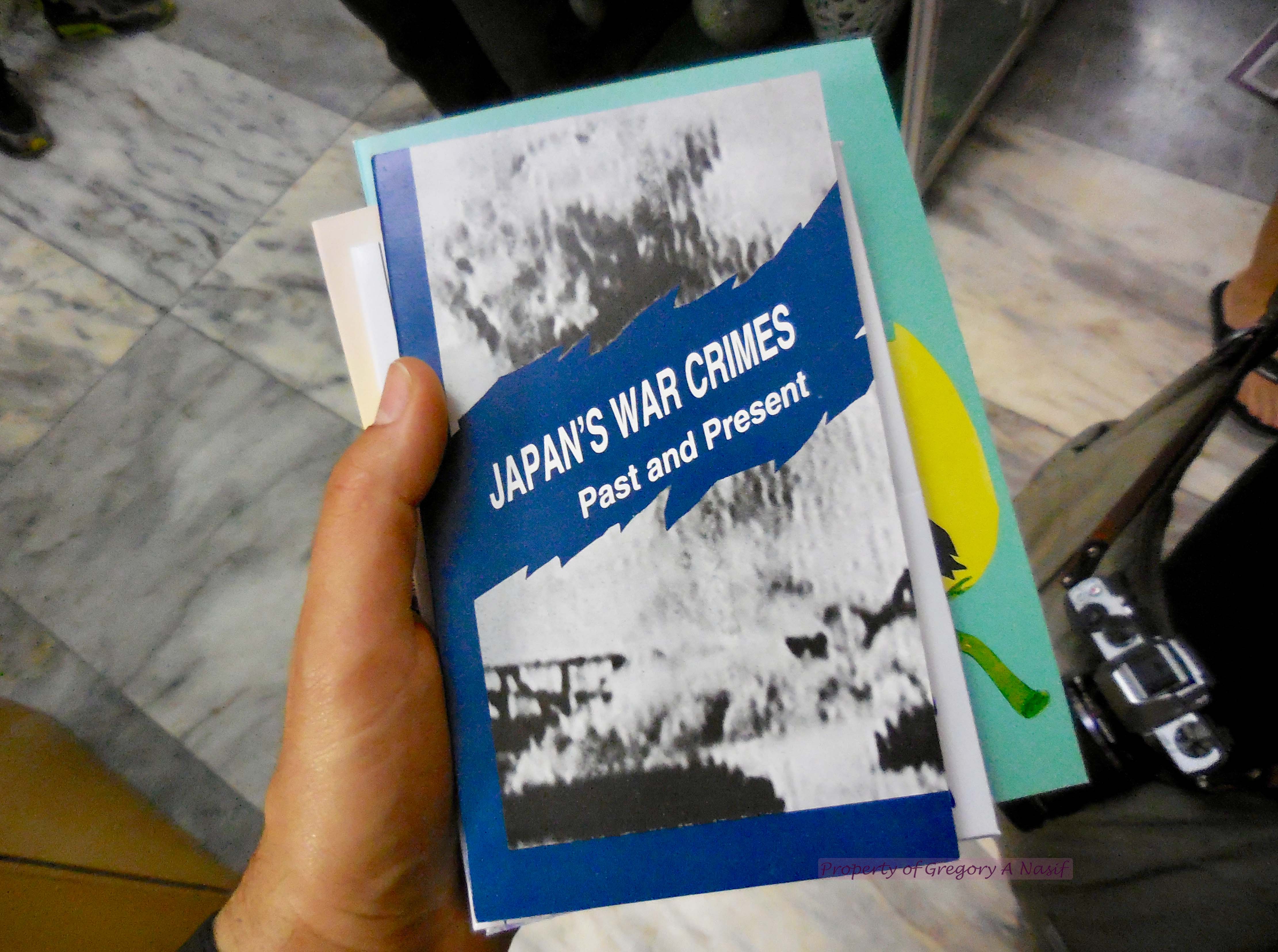
After leaving the book store, the walk to the bus routed back through Kim Il-sung Square, which by now had filled with high school students in spite of the increasing rain.
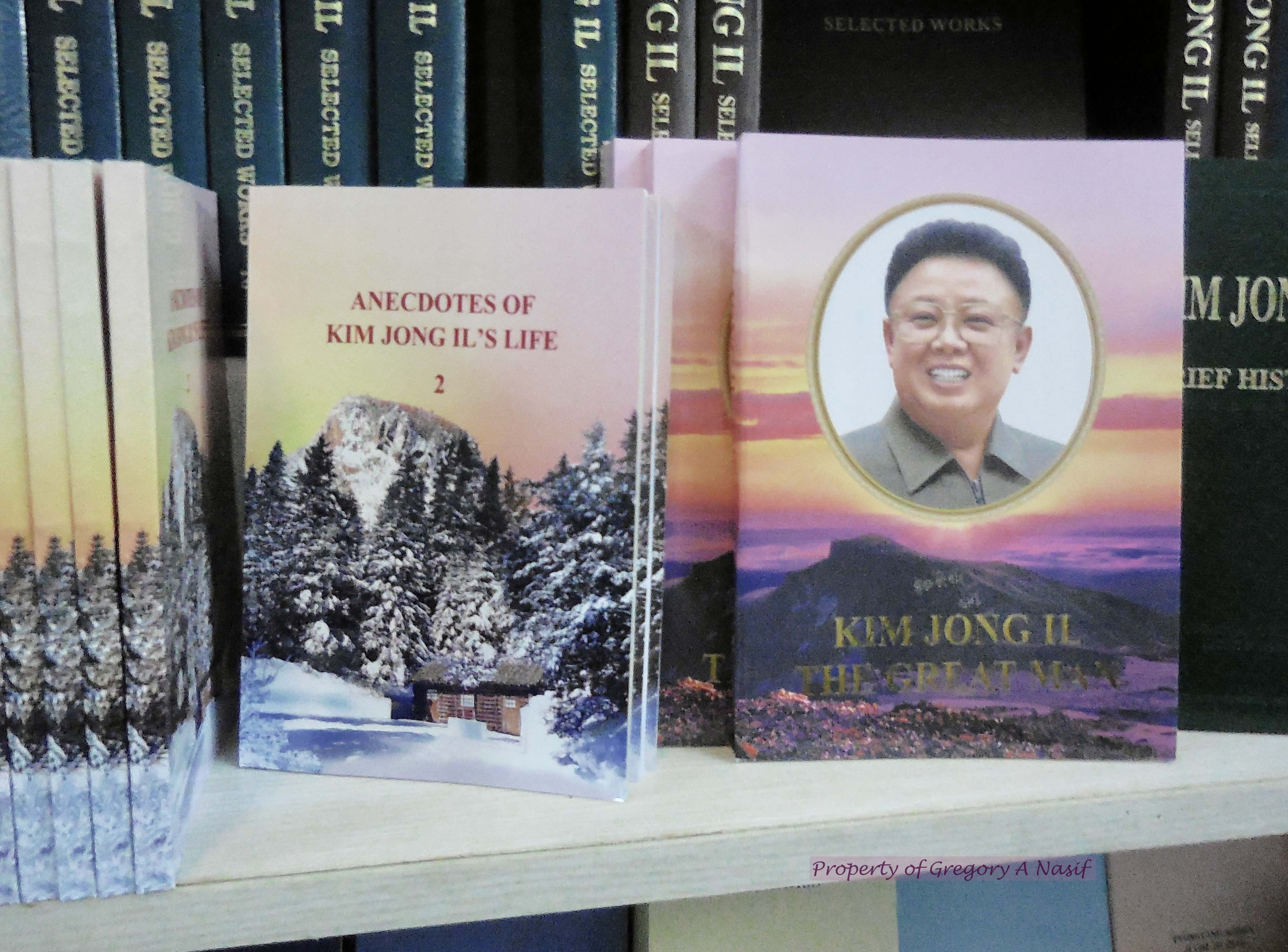
The students carried fake torches – they had been preparing for the Seventh Congress of the Worker’s Party of Korea, a major event set to begin within a week.
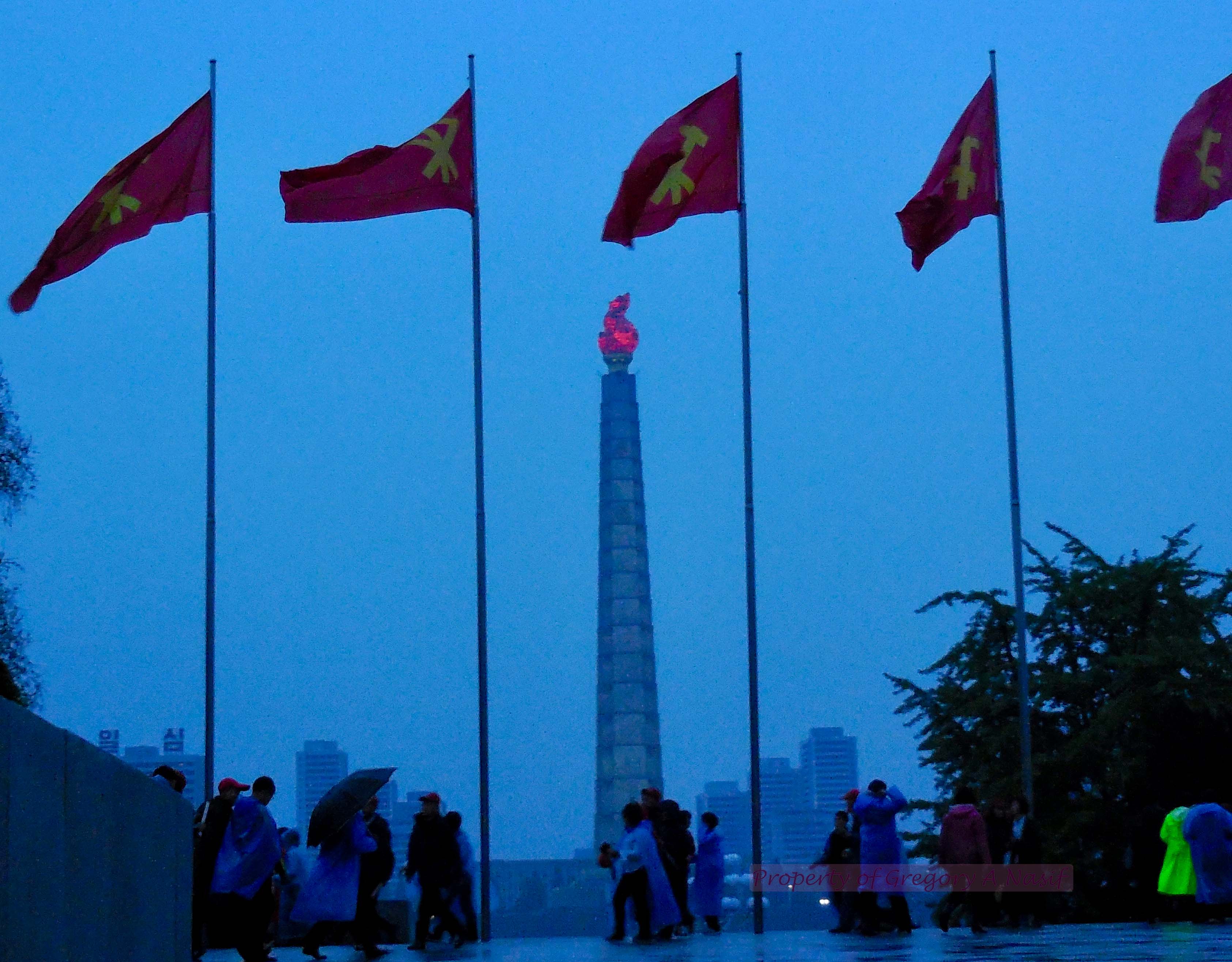
With such downtime, I thought the kids would be as interested in a picture as the Boston-shirt clad boy I’d met the day before.
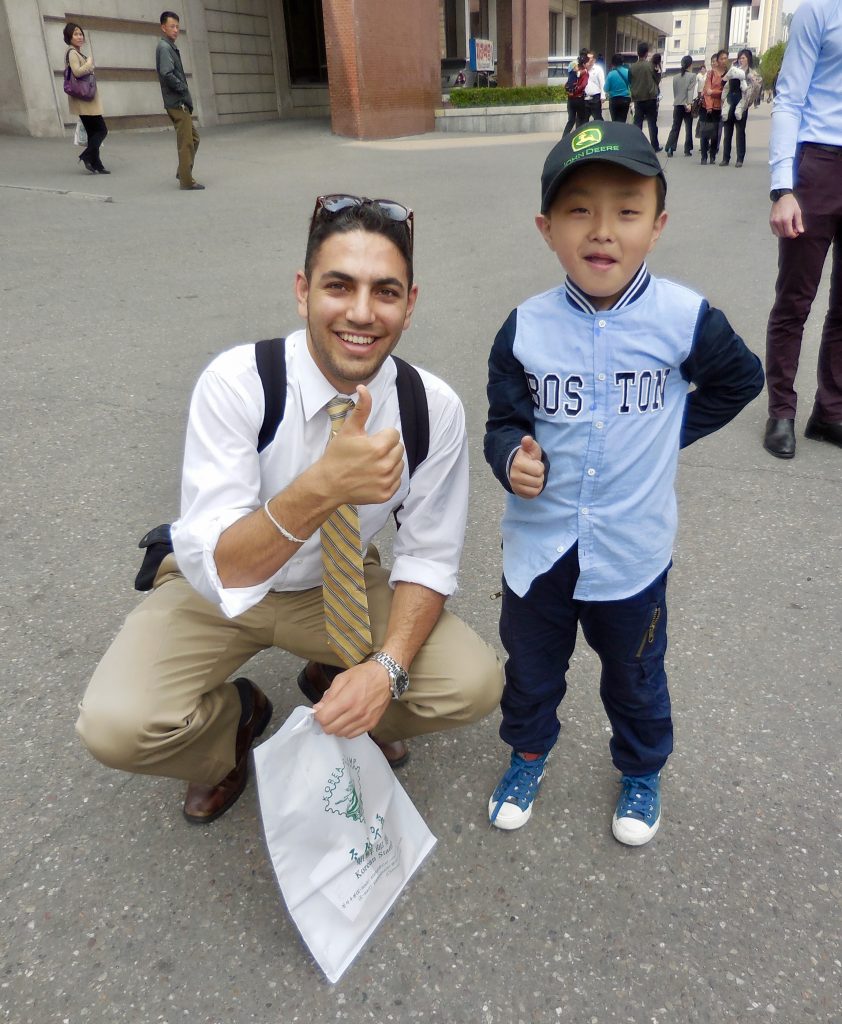
Mr. Hang translated a request from me to the teenagers to let me take a picture with them. Their expressions shifted remarkably. Two lit up with the possibility. Five more looked horrified. A boy of about sixteen turned his back to us, parking himself in front of his friends, closing the circle. It was a resounding “no.”
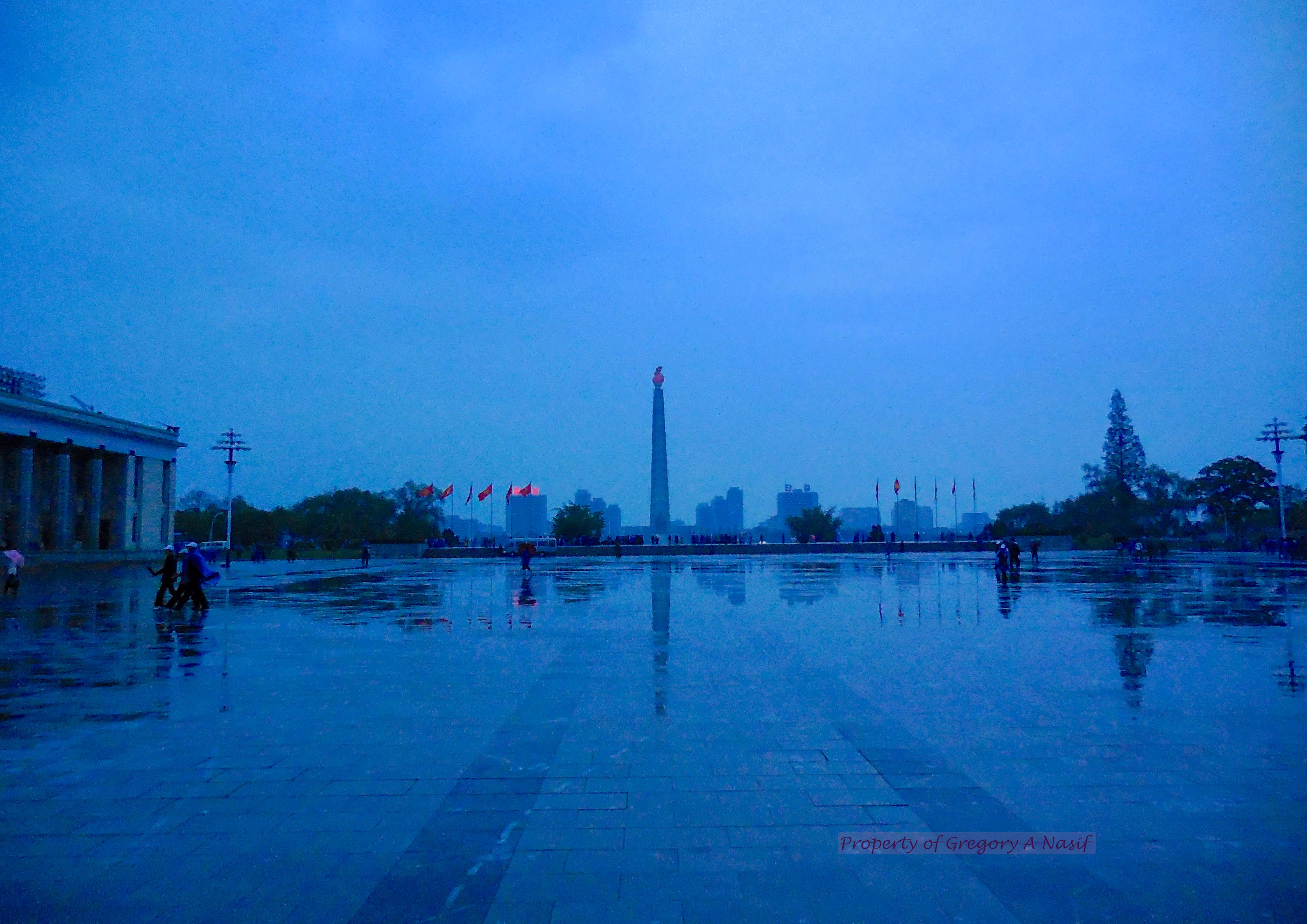
“They are shy,” said Mr. Hang.
Young people, by their nature, demand a higher pace of empathy from those they interact with. For someone who grew up abusing every freedom in the western world it was a moving experience to see someone too afraid to take a picture with me. This is Asia – teenagers usually jump out of their shoes at the opportunity to pose with foreigners.



The total rejection spoke louder than any two-hour documentary, any lecture by a guide, any loudspeaker blaring propaganda (as was ongoing in the square). There may be any reason the kids were mortified by the prospect of a photo with me. But for a moment, I imagined a life lived watching others disappear for stepping out of line, never speaking one’s thoughts aloud, and learning to keep my head down. I felt their fear it and was very real.
As we turned back toward the bus and drove off out of the intensifying rain, I couldn’t help but think Kim Il-sung’s portrait was laughing at me.
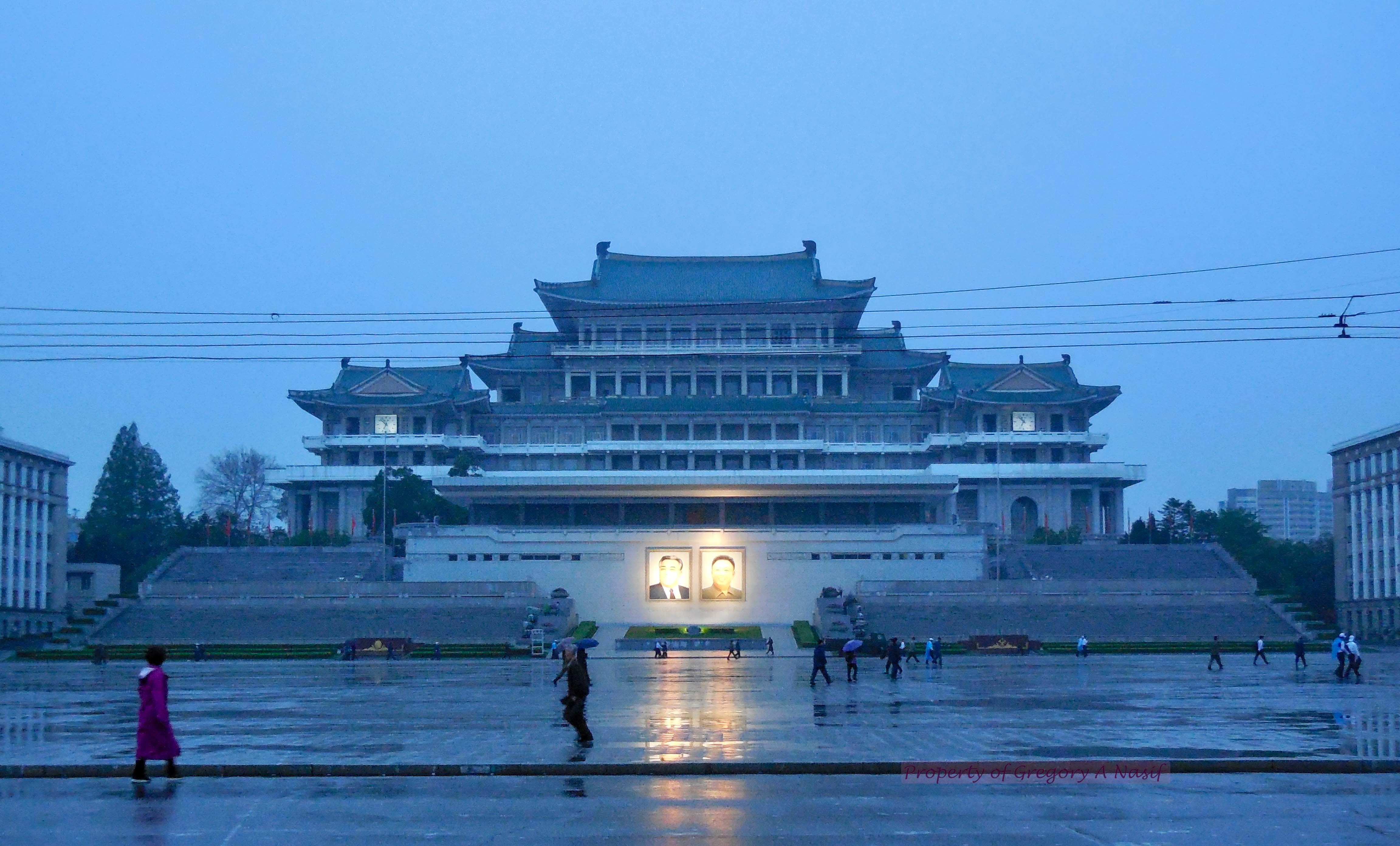
So ended day three in North Korea.
More photos:
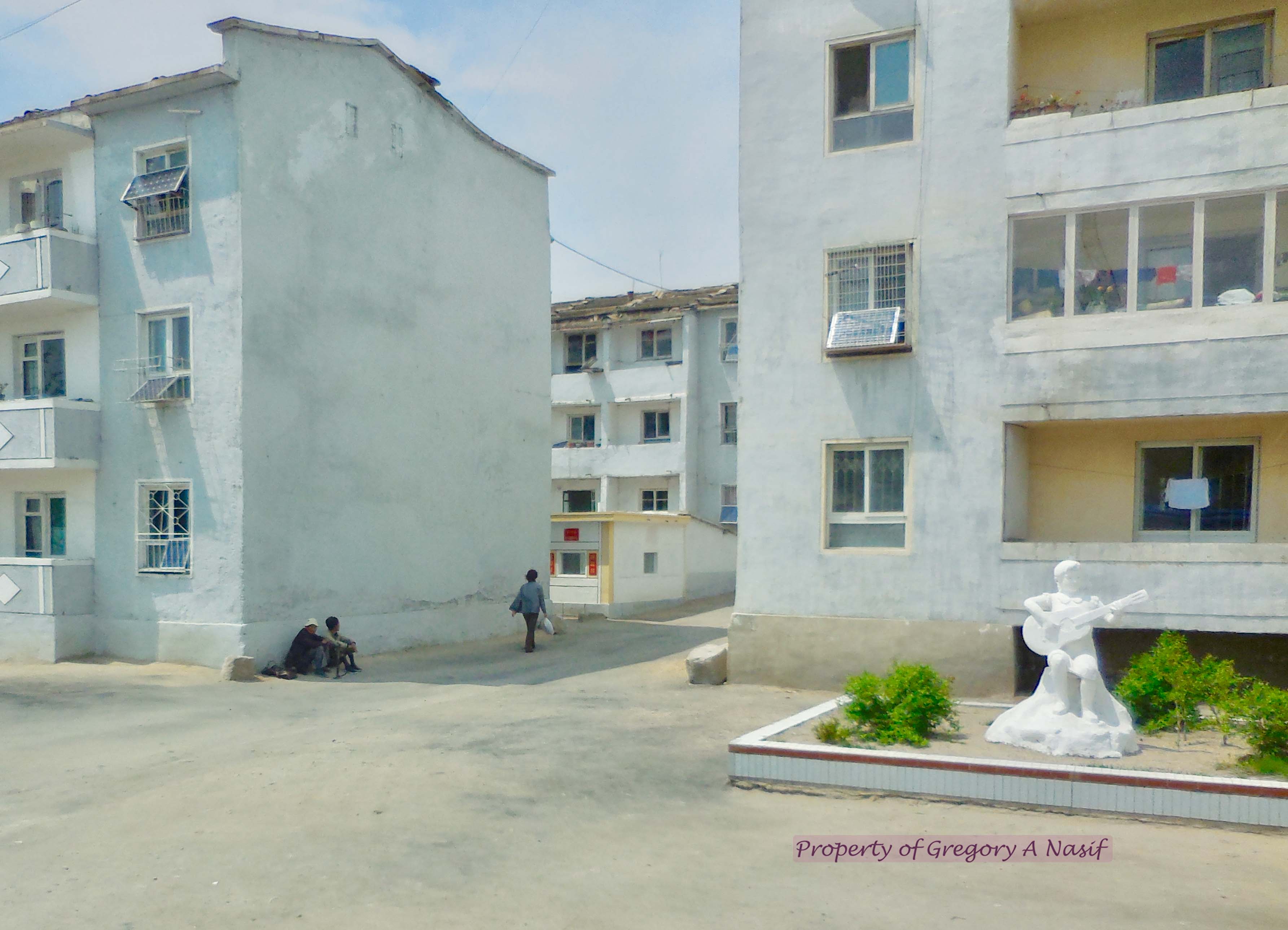
Kaesong
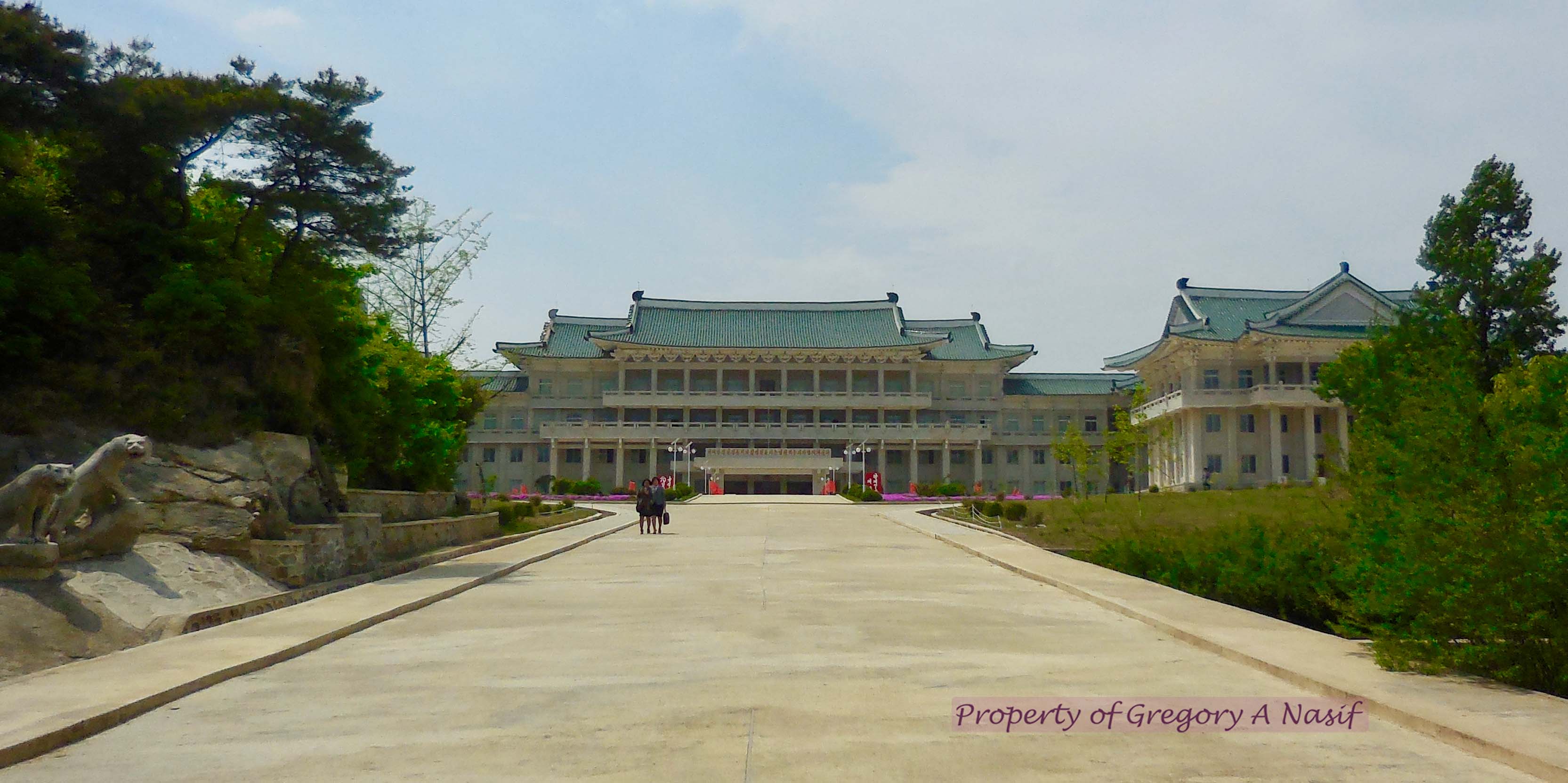
Kaesong
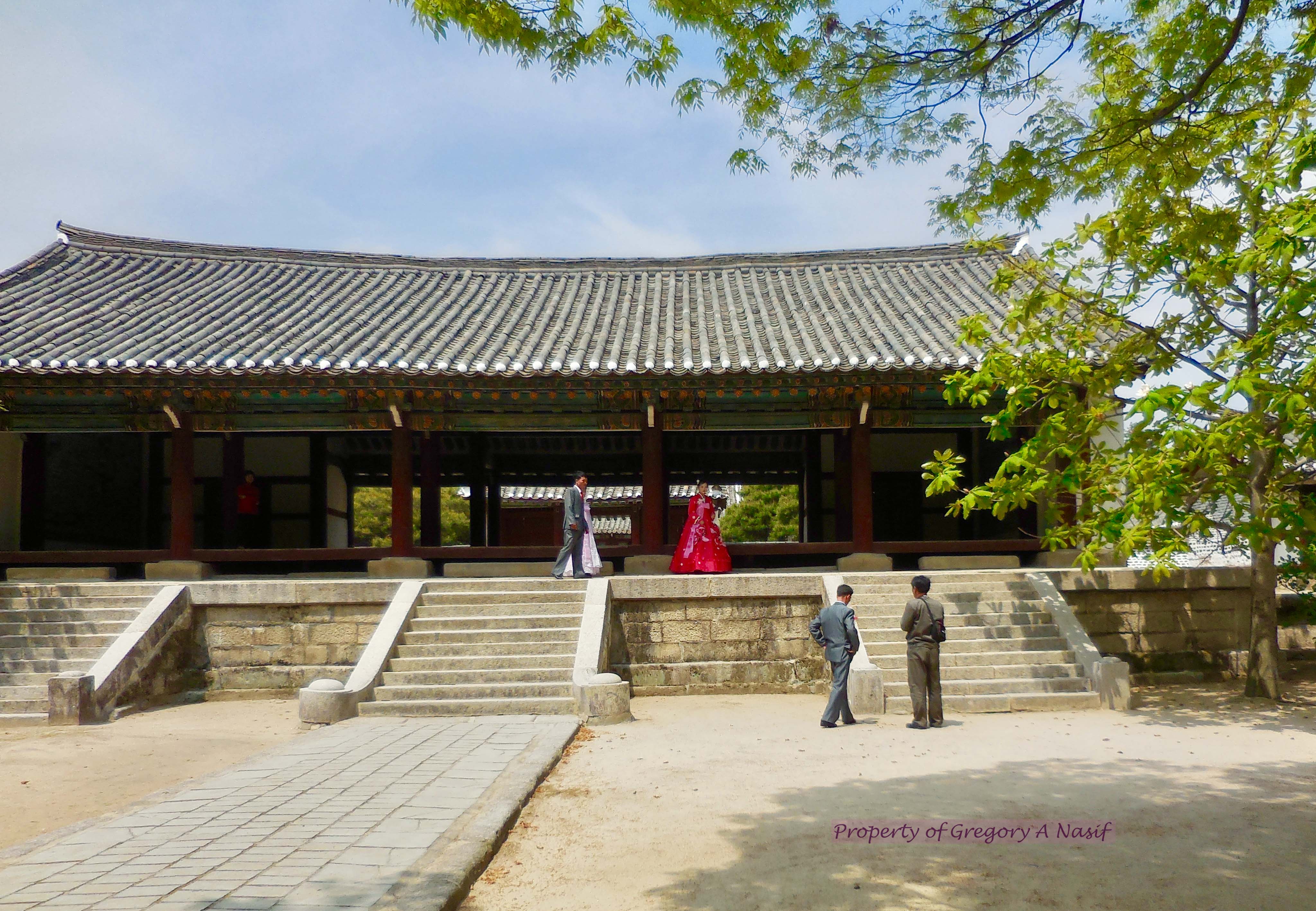
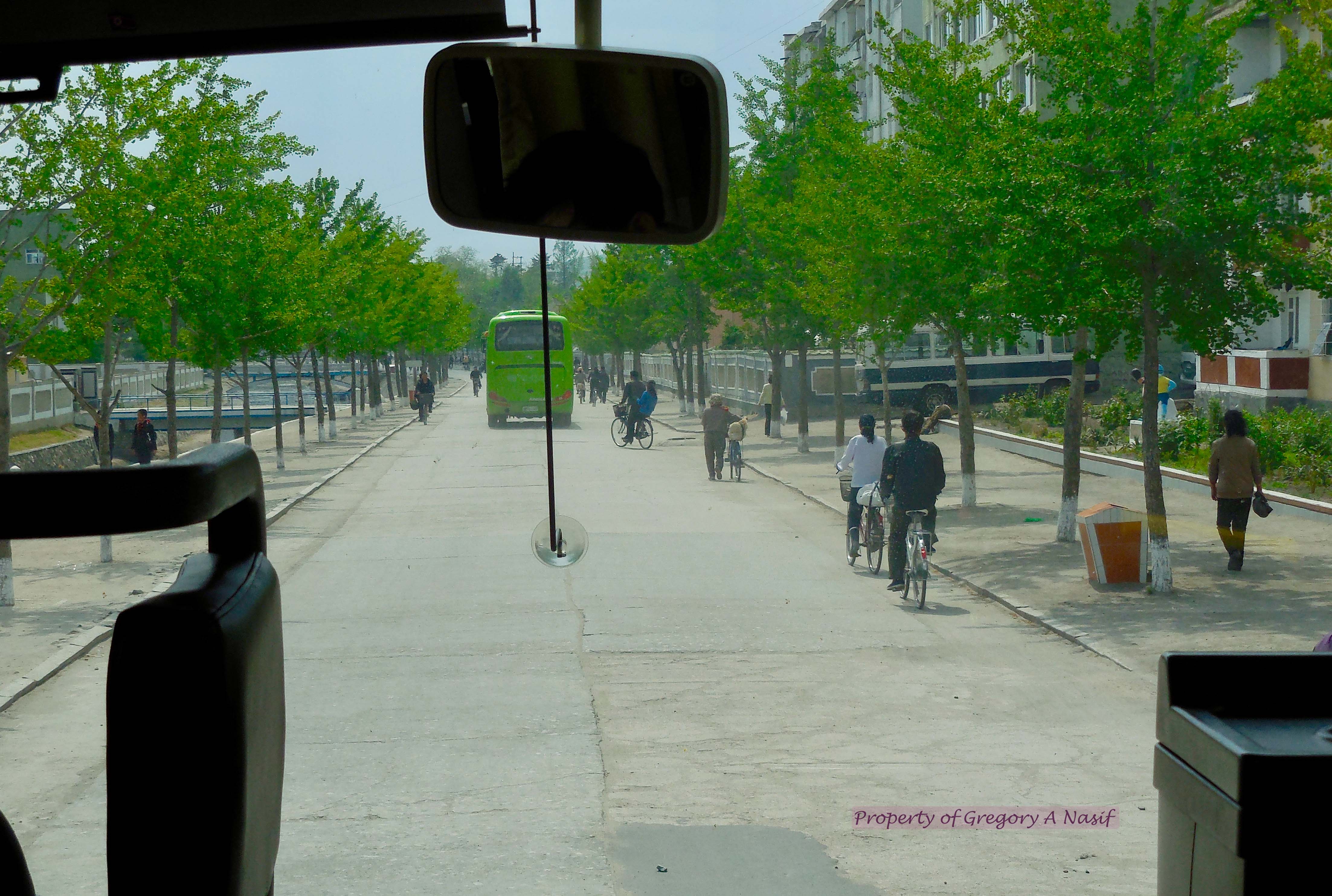
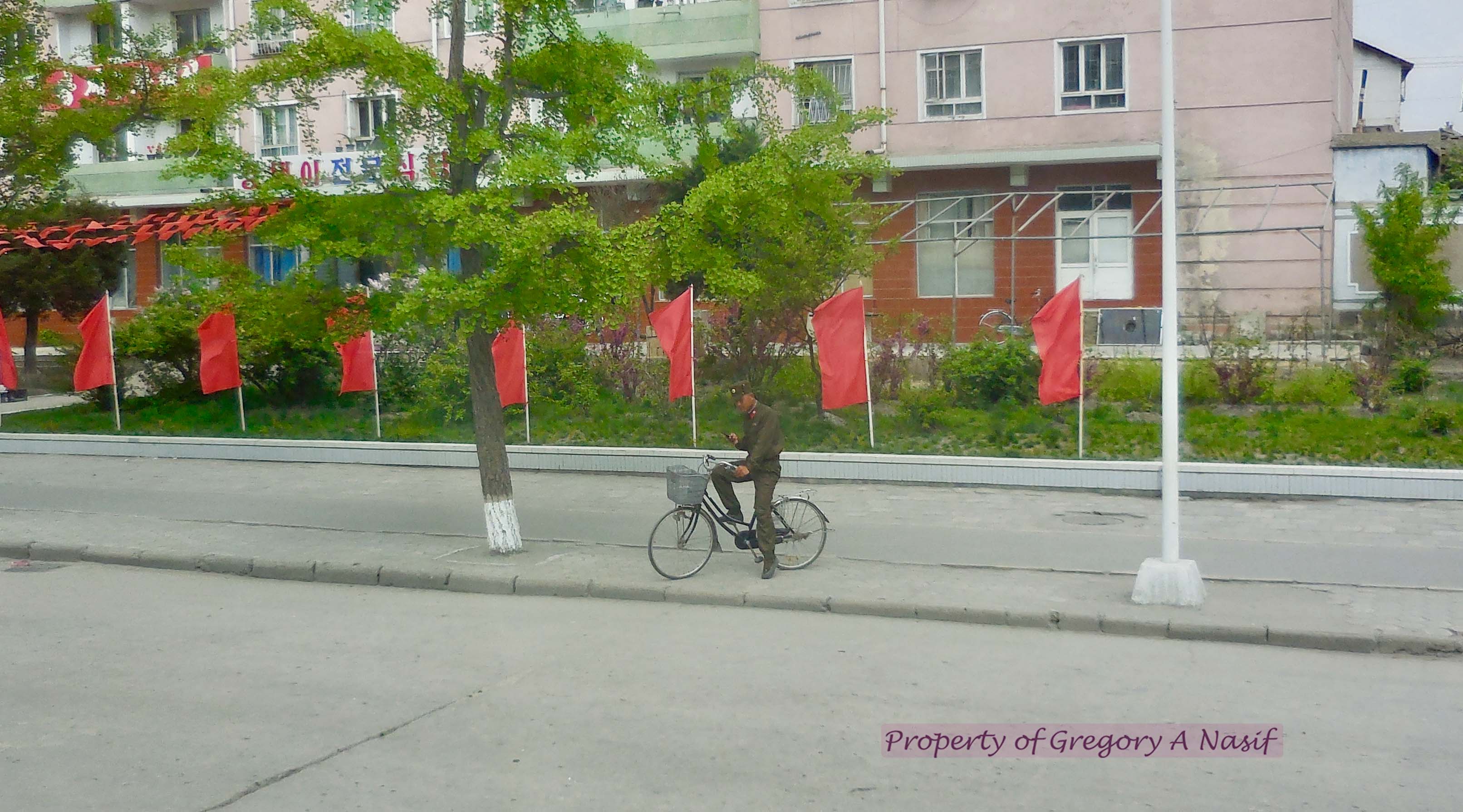
A soldier checks his phone
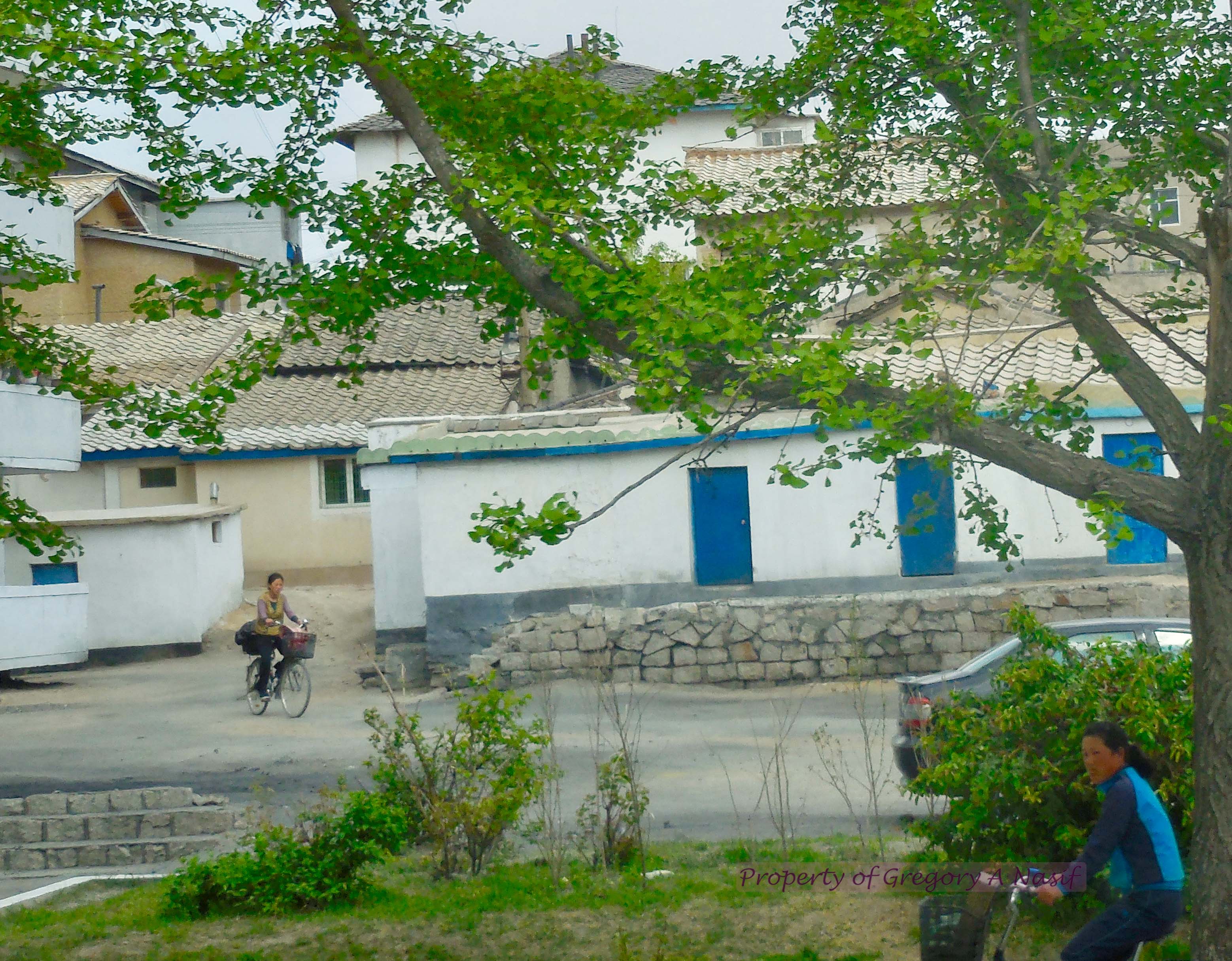
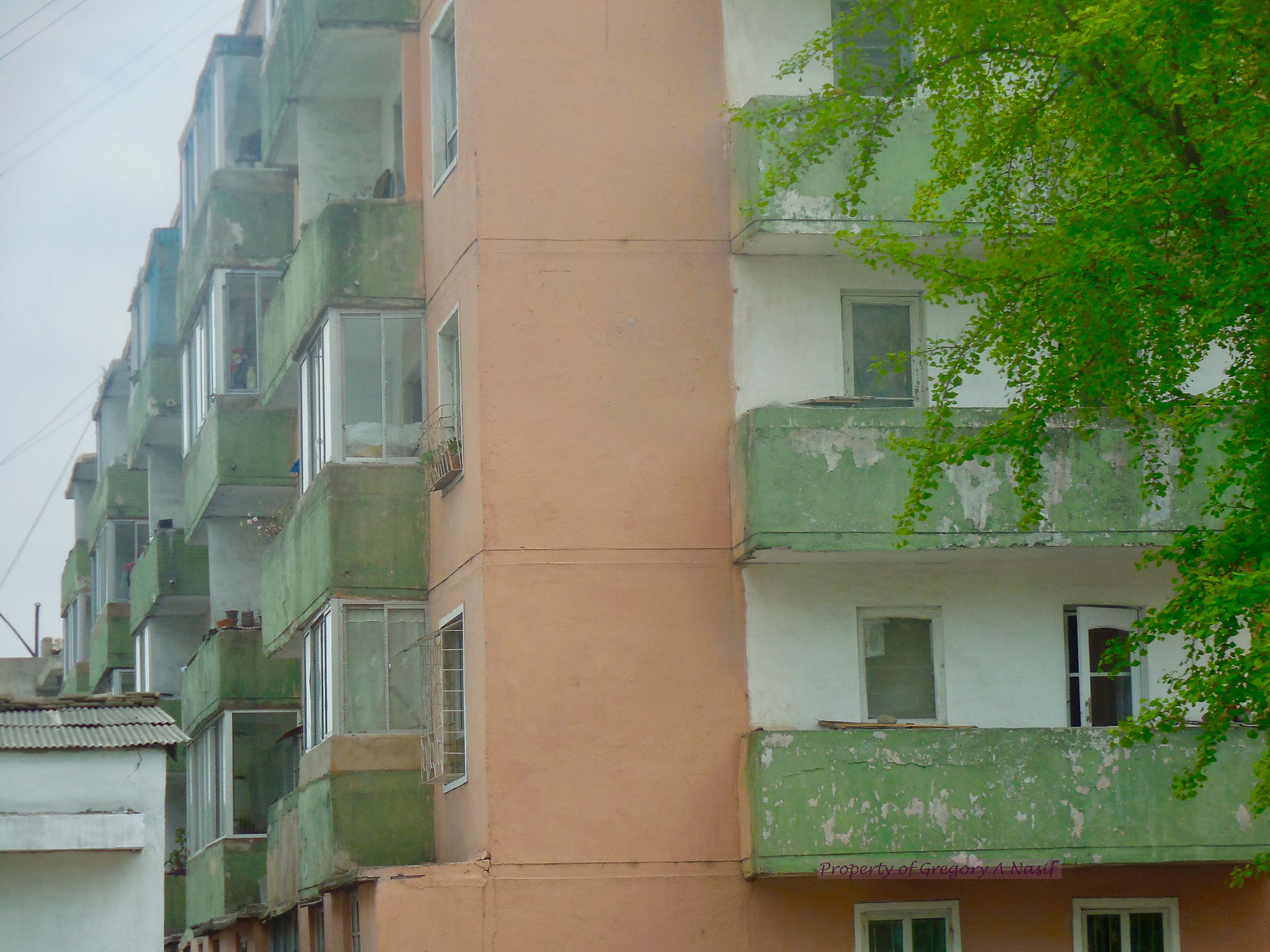

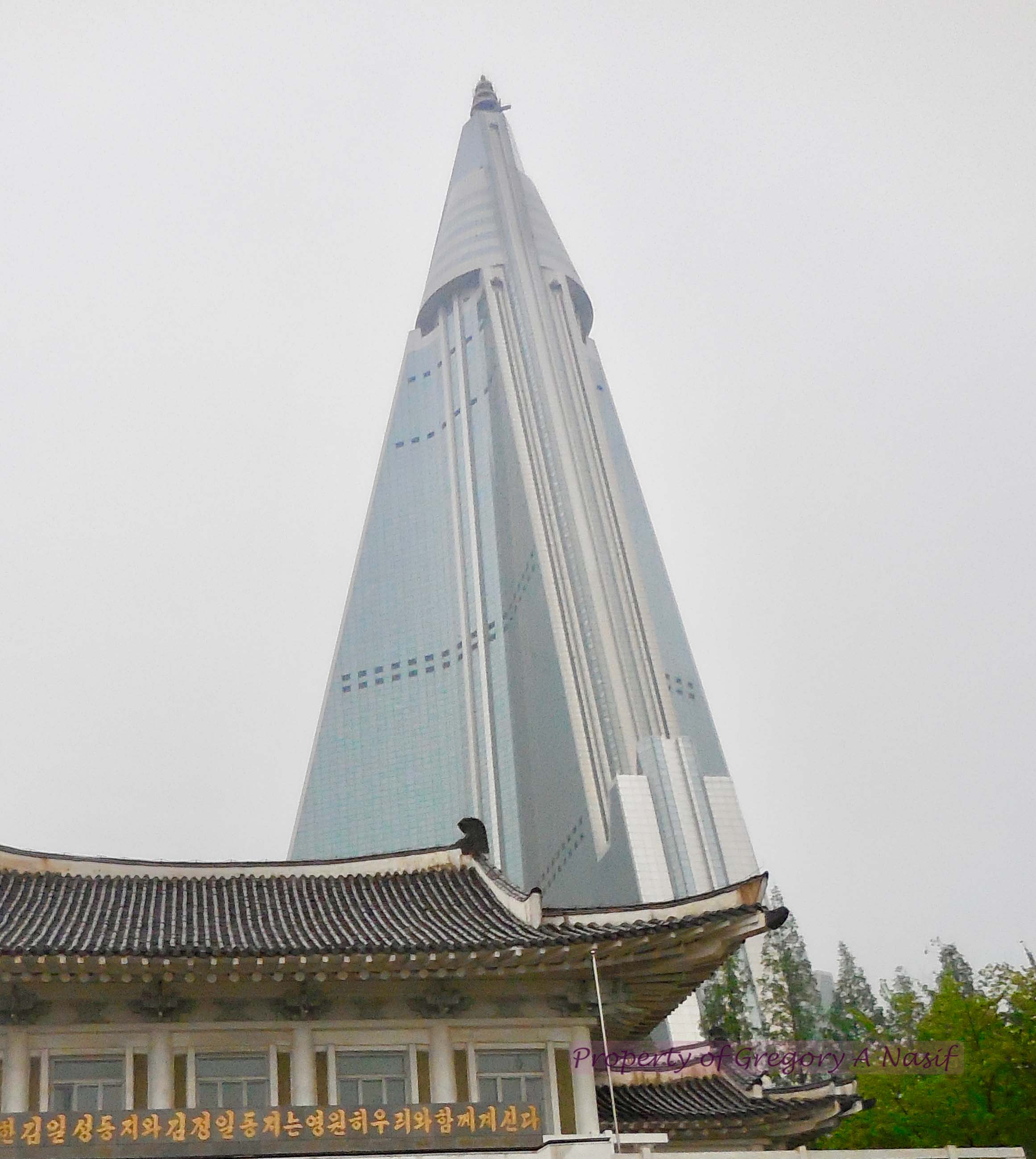


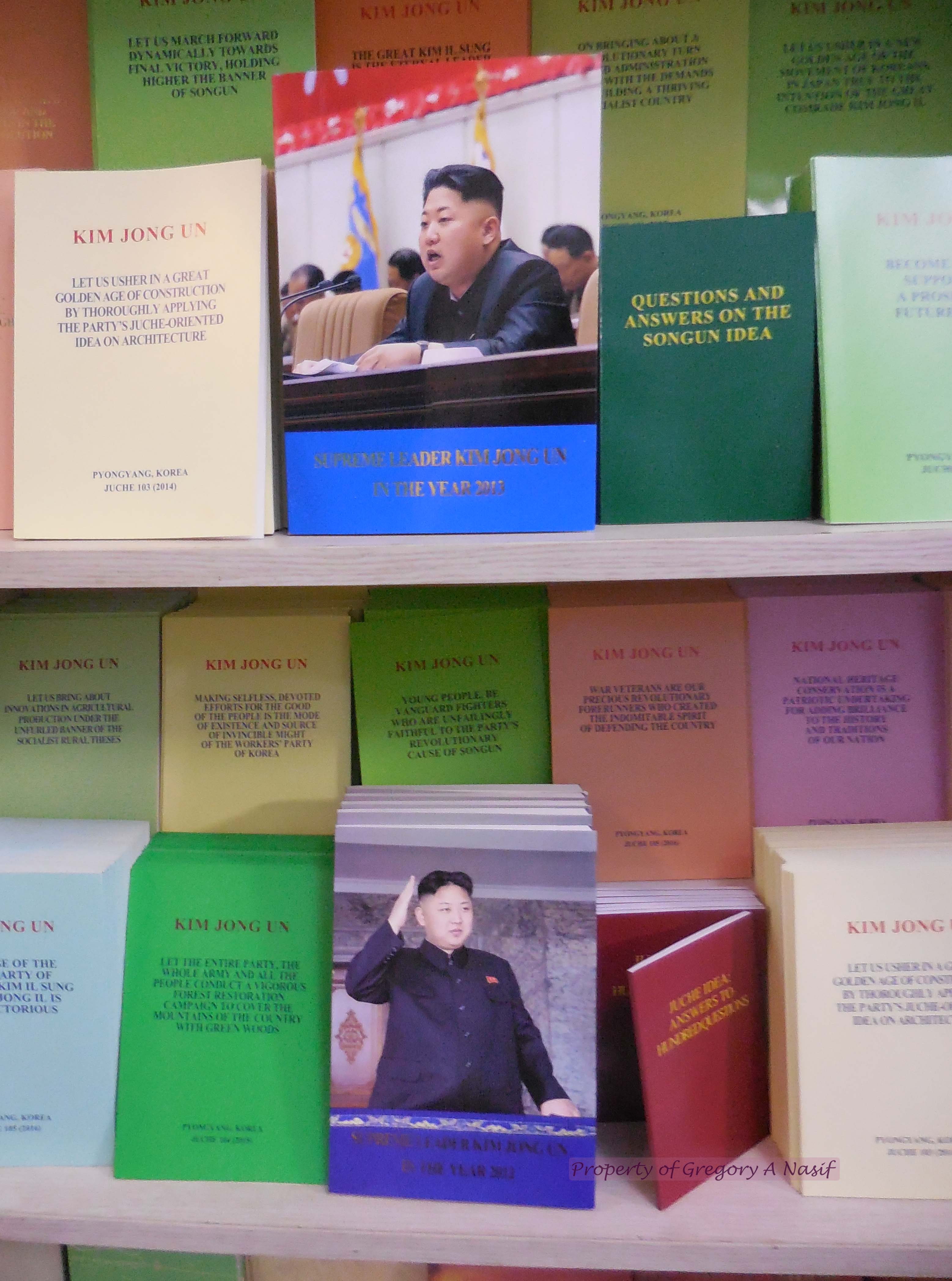 Thank you for reading. All photos are property of Gregory A Nasif
Thank you for reading. All photos are property of Gregory A Nasif

Thank you for reading. All photos are property of Gregory A Nasif.
Feedback: [email protected]